MAT 2021 Question Paper had 200 MCQs from five sections- Language Comprehension, Data Analysis and Sufficiency, Mathematical Skills, Intelligence and Critical Reasoning, Indian and Global Environment. Each section of MAT 2021 Question Paper had 40 questions. The overall difficulty level of MAT Question Paper 2021 was rated moderate. Candidates preparing for upcoming MAT exam can download and solve MAT 2021 Question Paper with Solutions PDF given below:
MAT 2021 Question Paper with Solutions PDF
| MAT 2021 Question Paper with Solution PDF | Download | Check Solutions |
MAT 2021 Question Paper with Solutions
A can hit a target 4 times in 5 shots, B hits 3 times in 4 shots, and C hits twice in 3 shots. They fire together. Find the probability that at least two shots hit the target.
The odds that A agrees with the truth are 3 : 2 and the odds that B agrees with the truth are 5 : 3. In what percent of cases are they likely to agree with each other on an identical point?
Fill pipe A is 3 times faster than second Fill pipe B and takes 32 minutes less than Fill pipe B. When will the cistern be full if both pipes are opened together?
The sum of two numbers, one of which is one-third of the other, is 36. The smaller number is:
The retail price of a water geyser is Rs. 1,265. If the manufacturer gains 10%, the wholesale dealer gains 15% and the retailer gains 25%, then the cost of the product is:
A man left one-half of his property for his wife, one-third for his son and the remainder for his daughter. If the daughter's share was worth Rs. 45,000, how much money did the man leave?
Anil is at present one-fourth the age of his father. After 16 years he will be one-half of the age of his father. Find the present age of Anil's father.
A machine is sold at a profit of 10%. Had it been sold for Rs. 40 less, there would have been a loss of 10%. What was the cost price of the machine?
In a class of 25 students with Roll Nos. 1 to 25, a student is picked up at random to answer a question. Find the probability that the roll number of the selected student is either a multiple of 5 or 7.
What percent of selling price would be 34% of cost price if gross profit is 26% of the selling price?
The tax on a commodity is diminished by 10% and its consumption increased by 10%. The effect on the revenue derived from it changes by \( K %\). Find the value of \( K \).
Ratio of Ashok's age to Pradeep's age is 4 : 3. Ashok will be 26 years old after 6 years. How old is Pradeep now?
The incomes of Chanda and Kim are in the ratio 5 : 3 and their expenditures are in the ratio 2 : 1. If each saves Rs. 1,000, then Chanda's expenditure is
A student purchased a computer system and a colour printer. If he sold the computer system at 10 loss and the colour printer at 20 gain, he would not lose anything. But if he sells the computer system at 5 gain and the colour printer at 15 loss, he would lose Rs. 800 in the bargain. How much did he pay for the colour printer?
X and Y entered into partnership with Rs. 700 and Rs. 600 respectively. After 3 months, X withdrew \( \frac{2}{7} \) of his stock but after 3 months, he puts back \( \frac{3}{5} \) of what he had withdrawn. The profit at the end of the year is Rs. 726. How much of this should X receive?
A man sitting in a train travelling at the rate of 50 km/hr observes that it takes 9 sec for a goods train travelling in the opposite direction to pass him. If the goods train is 187.5 m long, find its speed.
A runs \( 1 \frac{2}{3} \) times as fast as B. If A gives B a start of 80m, how far must the winning post be, so that A and B might reach it at the same time?
A team of workers was employed by a contractor who undertook to finish 360 pieces of an article in a certain number of days. Making four more pieces per day than was planned, they could complete the job a day ahead of schedule. How many days will they take to complete the job according to the new planning?
The work done by a woman in 8 hours is equal to the work done by a man in 6 hours and by a boy in 12 hours. If working 6 hours per day, 9 men can complete a work in 6 days, then in how many days can 12 men, 12 women and 12 boys together finish the same working 8 hours per day?
At the start of a seminar, the ratio of the number of male participants to the number of female participants was 3 : 1. During the tea break, 16 participants left and 6 more female participants registered. The ratio of the male to the female participants became 2:1. The total number of participants at the start of the seminar was
A man can row 30 km upstream and 44 km downstream in 10 hours. Also, he can row 40 km upstream and 55 km downstream in 13 hours. The rate of the current is
There are two identical vessels, X and Y. Y is filled with water to the brim and X is empty. There are two pails A and B, such that B can hold half as much water as A. One operation is said to be executed when water is transferred from Y to X using A once and water is transferred to Y from X using B once. If A can hold a litre of water and it takes 40 operations to equate the water level in X and Y, what is the total volume of water in the system?
One type of liquid contains 25% of milk, the other type of liquid contains 30% of milk. A can is filled with 6 parts of the first liquid and 4 parts of the second liquid. Find the percentage of milk in the new mixture.
A solution of sugar syrup has 15% sugar. Another solution has 5% sugar. How many litres of the second solution must be added to 20 litres of the first solution to make a solution of 10% sugar?
A salesman's terms were changed from a flat commission of 5% on all his sales to a fixed salary of Rs. 1,000 plus 2.5% commission on all sales exceeding Rs. 4,000. If his remuneration as per the new scheme was Rs. 600 more than by the first scheme, what were his sales worth?
In a class with a certain number of students, if one student weighing 50 kg is added, then the average weight of the class increases by 1 kg. If one more student weighing 50 kg is added, then the average weight of the class increases by 1.5 kg over the original average. What is the original average weight (in kg) of the class?
The average marks of a student in 8 subjects is 87. Of these, the highest marks are 2 more than the one next in value. If these two subjects are eliminated, the average marks of the remaining subjects are 85. What are the highest marks obtained by him?
An 8-litre cylinder contains a mixture of oxygen and nitrogen, the volume of oxygen being 16% of total volume. A few litres of the mixture is released and an equal amount of nitrogen is added. Then the same amount of the mixture as before is released and replaced by nitrogen for the second time. As result, the oxygen content becomes 9% of total volume. How many litres of mixture is released each time?
Two gallons of a mixture of spirit and water contain 12% of water. They are added to 3 gallons of another mixture, containing 7% of water and half a gallon of water is then added to the whole. Find the percentage of water in the resulting mixture.
If a bucket is 80% full, then it contains 2 litres more water than when it is \( 66 \frac{2}{3} % \) full. What is the capacity of the bucket?
In how many ways can 4 girls and 5 boys be arranged in a row so that all the four girls are together?
A number lock on a suitcase has 3 wheels each labelled with 10 digits from 0 to 9. If opening of the lock is a particular sequence of three digits with no repeats, how many such sequences will be possible?
The electricity bill of a certain establishment is partly fixed and partly varies as the number of units of electricity consumed. When in a certain month 540 units are consumed, the bill is Rs. 1,800. In another month 620 units are consumed and the bill is Rs. 2,040. In yet another month 500 units are consumed. The bill for that month would be
Two cyclists start on a circular track from a given point but in opposite directions with speeds of 7 m/sec and 8 m/sec respectively. If the circumference of the circle is 300 metres, after what time will they meet at the starting point for the first time?
A portion of a 30 m long tree is broken by a tornado and the top strikes the ground making an angle of \( 30^\circ \) with the ground level. The height of the point where the tree is broken is equal to
The speed of a boat in still water is 4 km/hr and the speed of current is 2 km/hr. If the time taken to reach a certain distance upstream is 9 hours, find the time it will take to go the same distance downstream.
A man rows 8 km/hr in still water. If the river is running at 2 km/hr, it takes 32 minutes to row to a place and back. How far is the place?
A man swimming in a stream which flows at \( 1 \frac{1}{2} \) km/hr finds that in a given time he can swim twice as far with the stream as he can against it. At what rate does he swim?
The number that must be added to each of the numbers 8, 21, 13 and 31 to make the ratio of the first two numbers equal to the ratio of the last two numbers is
Out of eight crew members, three particular members can sit only on the left side. Another two particular members can sit only on the right side. Find the number of ways in which the crew can be arranged so that four men can sit on each side.
Which of the following color options consists of 50% of all the cycles?
Cycles of which colour when increased by two percent and then combined with that of red cycles will make 30 percent of the total?
If in a certain period the total production of all cycles was 95,400, then how many more blue cycles were sold than green?
Cycles of which colour are 20% less popular than white coloured cycles directly in percentage?
The following graph shows the ratio of imports to exports by two companies A and B over the years.
If the imports of company A in Year VI were Rs. 10.40 crore, what were the exports of company A in the same year?
It is supposed that Imports – Exports = x for company A in Year I and the imports of company A in Year I were Rs. 3.6 crore, and it is also supposed that Imports – Exports = a for company B in Year V and the exports of company B in Year V were Rs. 5 crore. What is the relationship between a and x?
If the exports of company B in Year III were Rs. 2.19 crore, what were the imports of company B in the same year?
If the imports of company A in Year V were Rs. 8.40 crore, what were the exports of company B in Year VII?
By how much percentage is the value of history books higher than that of film magazines?
Which of the following statements is false?
What is the invested amount for literature as a percentage of the total investment of the library in books and magazine section?
What is the amount of reading material available related to the science group in both sections put together as a percentage of the total value invested in the library?
What is the total profit earned by company G for item I and II together?
What is the total profit earned by company B on production of item I and the profit earned by company A on production of item II?
What is the total cost of the production of item I by companies A and C together (in Rs. crore)?
Cost of production of item I by company F is what percent of the cost of production of item II by company D?
What is the cost of laying the carpet in a rectangular hall?
Statement I. Cost of the carpet is Rs. 450 per square metre.
Statemnent II. Perimeter of the hall is 50 meters.
What is the average daily wages of a worker who works for five days; he made Rs. 80 the first day?
Statement I. The worker made a total of Rs. 400 for the first four days of work.
Statement II. The worker made 20% more each day than he did on the previous day.
What is the difference between the shares of profits of Rekha and Nutan out of a profit of Rs. 6,000 at the end of the year?
Statement I. Rekha invested Rs. 50,000 and withdrew Rs. 1,000 after 4 months.
Statement II. For the last 8 months, Nutan’s capital was 125% of Rekha’s.
What will be the compound interest on a sum after 3 years?
Statement I. The compound interest on the sum at 5% per annum for 2 years is Rs. 12.50 more than the simple interest.
Statement II. The difference between compound interest and simple interest on the sum for 3 years at 5% per annum is Rs. 38.125.
What is the height of a right-angled triangle?
Statement I. The area of the right-angled triangle is equal to the area of a rectangle whose breadth is 15 m.
Statement II. The length of the rectangle is 12 m.
The area of a square is equal to the area of a circle. What is the circumference of the circle?
Statement I. The diagonal of the square is X inches.
Statement II. The side of the square is Y inches.
Rate of Interest, Dividend Payout Ratio, and the Retained Earnings of Five Companies
Profit earned is either paid out as dividend or ploughed back in business as retained earnings. Interest is paid on borrowings.
By how much do the borrowings of company B exceed that of company A?
Rate of Interest, Dividend Payout Ratio, and the Retained Earnings of Five Companies
Profit earned is either paid out as dividend or ploughed back in business as retained earnings. Interest is paid on borrowings.
By how much does the dividend paid by company D exceed the dividend paid by company B?
Rate of Interest, Dividend Payout Ratio, and the Retained Earnings of Five Companies
Profit earned is either paid out as dividend or ploughed back in business as retained earnings. Interest is paid on borrowings.
What is the sum of profits made by companies A and B?
Rate of Interest, Dividend Payout Ratio, and the Retained Earnings of Five Companies
Profit earned is either paid out as dividend or ploughed back in business as retained earnings. Interest is paid on borrowings.
What is the sum of the borrowings of all five companies?
Study the following bar graph and line graph giving details of Number of Workers Employed and Number of Units Shipped respectively of M/s Mega Corp Limited to answer the question.
\begin{figure[h!]
\centering
\end{figure
Question:
What was the difference, if any, between the number of permanent workers employed by M/s Mega Corp Limited on March 1 and the number of permanent workers employed on April 1?
What was the total number of units shipped by M/s Mega Corp Limited for the months of January, February, and March?
\begin{figure[h!]
\centering
\end{figure
If on May 1, 60% of the permanent workers and 40% of the temporary workers employed by M/s Mega Corp Limited were women, how many of the workers employed by M/s Mega Corp Limited at that time were women?
\begin{figure[h!]
\centering
\end{figure
By what percent did the number of temporary workers employed by M/s Mega Corp Limited increase from April 1 to May 1?
\begin{figure[h!]
\centering
\end{figure
Column A and Column B consist of two quantities. You are to compare the two quantities.
What is the comparison between the quantities in Column A and Column B?
What is the comparison between the quantities in Column A and Column B?
What is the comparison between the quantities in Column A and Column B?
Column A and Column B consist of two quantities. You are to compare the two quantities. What is the comparison between the quantities in Column A and Column B?
Column A and Column B consist of two quantities. You are to compare the two quantities.What is the comparison between the quantities in Column A and Column B?
Column A and Column B consist of two quantities. You are to compare the two quantities.What is the comparison between the quantities in Column A and Column B?
Study the following bar graph giving Economic Indices for the period 1961-62 to 2001-02 to answer the question. What is the average annual percentage increase in literacy index from 1961-62 to 2001-02?
What is the economic index with the maximum percentage increase?
In which period does per capita income index increase faster than the price index?
Study the following bar graph giving Economic Indices for the period 1961-62 to 2001-02 to answer the question. What are the respective indices of literacy, price, and per capita income for 2001-02, taking 1971-72 as the base period?
A folk painting style, named `Madhubani', originated in which state of India?
The symbol for Swachh Bharat Abhiyan contains ........
Indian Institute of Space Science and Technology is located in ........
Ashgabat, known as `the city of white marble', is the capital city of ........__
Which mission’s Portal for Affordable Credit and Interest Subvention Access (Paisa) under Ministry of Housing and Urban Affairs won the 2019 SKOCH Governance Gold Award?
World Mosquito Day is observed annually on ........
Name the first space shuttle launched.
Which Football Club had won the 2019 Durand Cup for the second time in the 131 years?
Who won the Golden Boot and Golden Ball award for top goal scoring and best player category in the 2019 Durand Cup?
The Indian National Calendar is based on
Which country has the largest rail network in the world?
Saina Nehwal is India's No. 1 player in which sport?
The classical dance form Kathakali originated in which Indian state?
Who invented the periodic table?
Lysosomes, which are known as suicidal bags, are produced by which organelle?
Which of the following banks launched 'Pocket', India's first digital bank on mobile phones?
Which one of the following countries will hold the presidency of the BRICS New Development Bank for the first six years?
A minor planet is named after which one of the following Indian Legends?
........, the 'founding father' and Architect of modern Singapore, passed away on 23 March 2015.
Which country has launched the world’s first ever Biometric Seafarer Identity Document (BSID) which captures the facial biometric data of seafarers?
Where was the 18th meeting of Conference of the Parties (CoP18) of Convention on International Trade in Endangered Species of Wild Fauna and Flora (CITES) held?
Name the subspecies of giraffe, which was declared endangered in the 18th meeting of Conference of the Parties (CoP18) of Convention on International Trade in Endangered Species of Wild Fauna and Flora (CITES).
After how many years, Economic Capital Framework (ECF) has to be reviewed as per the Bimal Jalan Committee?
Which principal organ of the United Nations has virtually accomplished its object?
Who among the following has been named as the new heir of the Mysore Royal Family?
Who among the following is known as the Metro man of India?
The Prime Minister has launched the "Give it Up" campaign for voluntarily giving up
Which country has launched the "Let Girls Learn" initiative aimed at educating 62 million girls around the world?
Advance ticket booking facility for railway passengers is available ........ days before the start of the journey
Name India’s first company that provides lifetime credit of up to Rs. 5 lakh instantly to its customers.
Name the Indian Cricketer, whose life time ban was reduced to seven year ban, which comes to end by 2020.
Who among the following was not a moderate?
The best method for improving the nutrient composition of a diet is by
'No two electrons in an atom can have the same set of four quantum numbers' is
Consider the following statements
I. The Western Ghats are relatively higher in their northern region
II. Doda Beta is the highest peak in the Western Ghats
Which among the above statements is/are incorrect?
Arjuna Award is given for
Which day of the year is celebrated as World Radio day?
Which movie won the Oscar in the best picture category in the 87th Academy Awards?
Acid used in Car battery is
The Maze Tower in which city has been recognised by Guinness World Records as representing the largest vertical maze?
Statement:
The patient’s condition would improve after operation.
Assumptions:
I. The patient can be operated upon in this condition.
II. The patient cannot be operated upon in this condition.
The government has decided to disinvest large chunks of its equity in select public sector undertakings for a better fiscal management.
Assumptions:
I. The amount generated out of the disinvestments process may reduce substantially the mounting fiscal deficits.
II. There will be enough demand in the market for the shares of these undertakings.
All existing inequalities can be reduced, if not utterly eradicated, by action of governments or by revolutionary change of government.
Assumptions:
I. Inequality is a man-made phenomenon.
II. No person would voluntarily part with what he possesses.
"You are hereby appointed as a programmer with a probation period of one year and your performance will be reviewed at the end of the period for confirmation." – A line in an appointment letter.
Assumptions:
I. The performance of an individual generally is not known at the time of appointment offer.
II. Generally an individual tries to prove his worth in the probation period.
Should judiciary be independent of the executive?
Arguments:
I. Yes, this would help curb the unlawful activities of the executive.
II. No, the executive would not be able to take bold measures.
Should open book systems be introduced in examinations?
Arguments:
I. Yes, because it will avoid mass copying.
II. No, because then all students will get 100% marks.
Should religion be taught in our schools?
Arguments:
I. Yes, do the parents not wish to develop their wards into mature individuals?
II. No, how can one dream of such a step when we want the young generation to fulfill its role?
Should family planning be made compulsory in India?
Arguments:
I. Yes, looking at the miserable conditions in India, there is no other go.
II. No, in India there are people of various religions and family planning is against the tenets of some of the religions.
Statement:
Black cloud follows thunder; rains follow thunder.
Conclusions:
I. Thunder is the cause of rain.
II. Black cloud is the cause of thunder.
Statement:
The secret of success is consistency of purpose.
Conclusions:
I. It is difficult for a person to be consistent.
II. Single-minded devotion will highly help for achieving success.
Statement:
Today out of the world population of several thousand million, the majority of men have to live under governments which refuse them personal liberty and the right to dissent.
Conclusions:
I. People are indifferent to personal liberty and the right to dissent.
II. People desire personal liberty and the right to dissent.
Statement:
The use of non-conventional sources of energy will eliminate the energy crisis in the world.
Conclusions:
I. Modern technology is gradually replacing the conventional sources of energy.
II. The excessive exploitation of the environment has led to depletion of conventional sources of energy.
Among five boys, Vineet is taller than Manick, but not as tall as Ravi. Jacob is taller than Dilip but shorter than Manick. Who is the tallest in their group?
If P is taller than Q, R is shorter than P, S is taller than T but shorter than Q, then who among them is the tallest?
My bag can carry no more than ten books. I must carry at least one book each of management, mathematics, physics and fiction. Also for every management book I must carry two or more fiction books, and for every mathematics book I must carry two or more physics books. I earn 4, 3, 2, and 1 points for each management, mathematics, physics and fiction book, respectively. I carry in my bag. I want to maximize the points I can earn by carrying the most appropriate combination of books in my bag. The maximum points that I can earn are
Eighty kilogram of store material is to be transported to a location 10 km away. Any number of couriers can be used to transport the material. The material can be packed in any number of units of 10, 20 or 40 kg. Courier charges are Rs. 10 per hour. Couriers travel at the speed of 10 km/hr if they are not carrying any load, at 5 km/hr if carrying 10 kg, at 2 km/hr if carrying 20 kg and at 1 km/hr if carrying 40 kg. A courier cannot carry more than 40 kg of load. The minimum cost at which 80 kg of store material can be transported to its destination will be (given the total quantity must be sent by using one kind of packs only, a combination of packs is not allowed)
From a point, Rajneesh started walking towards east and walked 35 m. He then turned towards his right and walked 20 m and he again turned right and walked 35 m. Finally, he turned to his left and walked 20 m and he reached his destination. Now, how far is he from his starting point?
A directional post is erected on a crossing. In an accident, it was turned in such a way that the actual east is now point towards north. A passerby went in a wrong direction thinking it is west. In which direction is he actually travelling now?
Kittu is in between Mohan and Sohan, Raju is to the left of Sohan and Shyam is to the right of Mohan. If all of the friends are sitting facing South, then who is on their extreme right?
In a queue, Sadiq is 14th from the front and Joseph is 17th from the end, while Jane is in between Sadiq and Joseph. If Sadiq be ahead of Joseph and there be 48 persons in the queue, how many persons are there between Sadiq and Jane?
A cube is to be coloured in such a way as to avoid the same colour on adjacent surfaces. What is the minimum number of colours you will require?
Persons X, Y, Z and Q live in red, green, yellow or blue coloured houses placed in a sequence on a street. Z lives in a yellow house. The green house is adjacent to the blue house. X does not live adjacent to Z. The yellow house is in between the green and red house. The colour of the house X lives in is
D-4, F-6, H-8, J-10, '?'
3F, 6G, 11I, 18L, '?'
A, G, L, P, S, '?'
AI, BJ, CK, '?'
6, 11, 21, 36, 56, '?'
1, 9, 17, 33, 49, 73, '?'
Ram's age was square of a number last year and it will be cube of a number next year. How long must he wait before his age is again the cube of a number?
A, B, C and D play a game of cards. A says to B, 'If I give you 8 cards, you will have as many as C has and I shall have 3 less than what C has. Also if I take 6 cards from C, I shall have twice as many as D has.' If B and D together have 50 cards, how many cards has A got?
Introducing Rajesh, Neha said, "his brother's father is the only son of my grandfather". How is Rajesh related to Neha?
Saroj is mother-in-law of Vani who is sister-in-law of Deepak. Rajesh is father of Ramesh, the only brother of Deepak. How is Saroj related to Deepak?
A famous singer recently won a lawsuit against an advertising firm for using another singer in a commercial to evoke the famous singer's well-known rendition of a certain song. As a result of the lawsuit, advertising firms will stop using imitators in commercials. Therefore, advertising costs will rise, since famous singer’s services cost more than those of their imitators.
The conclusions above are based on which of the following assumptions?
Whenever a major airplane accident occurs, there is a dramatic increase in the number of airplane mishaps reported in the media, a phenomenon that may last for as a few months after the accident. Airline officials assert that the publicity given to the gruesomeness of major airplane accidents focuses media attention on the airline industry, and the increase in the number of reported accidents is caused by an increase in the number of news sources covering airline accidents, not by an increase in the number of accidents.
Which of the following choices explains the discrepancies stated above?
In a certain code TEACHER is written as VGCEJGT. How is CHILDREN written in that code?
In a certain code, 'BASIC' is written as 'DDULE'. How is 'LEADER' written in that code?
The prices of foodgrains and vegetables have substantially increased due to prolonged strike call given by the truck owners association.
There has been an unprecedented increase in the number of requests for berths in most of the long distance trains during the current holiday season.
There has been significant drop in the water level of all the lakes supplying water to the city.
A large number of people visiting India from country 'X' has been tested positive for carrying viruses of a killer disease.
Astrologers are habitually prone to goof-ups; now have an excuse for why their predictions have been going haywire: the emergence of newer and newer planets that have caused their calculations to go awry. For the international team of astronomers who recently discovered eight new planets, the arrivals are, however, a cause for excitement.
Read More
Indeed, even as the rest of the world continues to be consumed by a morbid passion for shiny new war machines, deadly chemicals and sinister war tactics, astronomers have been doggedly searching the heavens for more heavenly bodies in the belief that the search will take us closer to a more exalted goal '' that of knowing the truth about us and the universe. Reality is much bigger than it seems the part we call the universe is the merest tip of the iceberg, one scientist remarked. How true. In the beginning, skeptics wouldn't accept that the earth actually moves, let alone that it revolves around the sun because of an unshaken belief that the earth was the centre of the universe. We've come a long way. Today, scientists have spotted nearly 80 extra-solar planets using sophisticated instruments. What's more, our universe may not be the only universe in the cosmos; there could well be several parallel universes teeming with many galaxies, solar systems and planets, although none of this may be perceptible to the naked eye. Perhaps sages who say that truth is not easily perceptible, mean just this '' what is evidently before us is not the whole truth.Scientists say that everything in the tangible universe has its shadowy counterpart in other, parallel universes. In fact, it is by observing the play of cosmic light and shadow through powerful devices that scientists have been able to feel shapes or see shadows that indicate the existence of other heavenly bodies without actually seeing them. The international team of scientists involved in the present discovery conducted their search through telescopes in Australia, Belgium, UK and the US. Two of the newly discovered eight planets are believed to have circular orbits very like the Earth’s, while the others have well-defined elliptical orbits much like Pluto’s. This is significant because a planet with a circular orbit would more likely be hospitable to life forms than would one with an elliptical orbit. In the latter, the planet experiences extreme temperatures depending on whether it is proximate to or distant from the energy-giving star it’s circumambulating. As in the case of other recent discoveries '' such as finding traces of microbes in a meteorite '' this too strengthens the belief that we are not alone in the universe. So would we be exchanging inter galactic e-mails soon? Perhaps not as yet, given that our closest neighbouring galaxy is millions of light years away. What is within our immediate grasp, though, is exploring the viability of establishing human settlements in space '' an endeavour that has assumed urgency what with biological terrorism and the like threatening humankind on earth. As Stephen Hawking recently said, I don’t think the human race will survive the next thousand years unless we spread into space. There are too many accidents that can befall life on a single planet.
Astrologers are habitually prone to goof-ups; now have an excuse for why their predictions have been going haywire: the
emergence of newer and newer planets that have caused their calculations to go awry. For the international team of
astronomers who recently discovered eight new planets, the arrivals are, however, a cause for excitement.
Read More
Indeed, even as therest of the world continues to be consumed by a morbid passion for shiny new war machines, deadly chemicals and sinister war
tactics, astronomers have been doggedly searching the heavens for more heavenly bodies in the belief that the search will take
us closer to a more exalted goal " that of knowing the truth about us and the universe. Reality is much bigger than it seems the
part we call the universe is the merest tip of the iceberg, one scientist remarked. How true. In the beginning, skeptics wouldn't
accept that the earth actually moves, let alone that it revolves around the sun because of an unshaken belief that the earth was
the centre of the universe. We've come a long way. Today, scientists have spotted nearly 80 extra-solar planets using
sophisticated instruments. What's more, our universe may not be the only universe in the cosmos; there could well be several
parallel universes teeming with many galaxies, solar systems and planets, although none of this may be perceptible to the
naked eye. Perhaps sages who say that truth is not easily perceptible, mean just this " what is evidently before us is not the
whole truth.
Scientists say that everything in the tangible universe has its shadowy counterpart in other, parallel universes. In fact, it is by
observing the play of cosmic light and shadow through powerful devices that scientists have been able to feel shapes or see
shadows that indicate the existence of other heavenly bodies without actually seeing them. The international team of scientists
involved in the present discovery conducted their search through telescopes in Australia, Belgium, UK and the US. Two of the
newly discovered eight planets are believed to have circular orbits very like the Earth's, while the others have well-defined
elliptical orbits much like Pluto's. This is significant because a planet with a circular orbit would more likely be hospitable to life
forms than would one with an elliptical orbit. In the latter, the planet experiences extreme temperatures depending on whether
it is proximate to or distant from the energy-giving star it's circumambulating. As in the case of other recent discoveries " such
as finding traces of microbes in a meteorite " this too strengthens the belief that we are not alone in the universe. So would we
be exchanging inter galactic e-mails soon? Perhaps not as yet, given that our closest neighbouring galaxy is millions of light
years away. What is within our immediate grasp, though, is exploring the viability of establishing human settlements in space "
an endeavour that has assumed urgency what with biological terrorism and the like threatening humankind on earth. As
Stephen Hawking recently said, I don't think the human race will survive the next thousand years unless we spread into space.
There are too many accidents that can befall life on a single planet.
Astrologers habitually prone to goof-ups now have an excuse for why their predictions have been going haywire: the
emergence of newer and newer planets that have caused their calculations to go awry. For the international team of
astronomers who recently discovered eight new planets, the arrivals are, however, a cause for excitement. Indeed, even as the
rest of the world continues to be consumed by a morbid passion for shiny new war machines, deadly chemicals and sinister war
tactics, astronomers have been doggedly searching the heavens for more heavenly bodies in the belief that the search will take
us closer to a more exalted goal " that of knowing the truth about us and the universe.
Read More
'Reality is much bigger than it seems,the part we call the universe is the merest tip of the iceberg' one scientist remarked. How true. In the beginning, skeptics
wouldn't accept that the earth actually moves, let alone that it revolves around the sun because of an unshaken belief that the
earth was the centre of the universe. We've come a long way. Today, scientists have spotted nearly 80 extra-solar planets using
sophisticated instruments. What's more, our universe may not be the only universe in the cosmos; there could well be several
parallel universes teeming with many galaxies, solar systems and planets, although none of this may be perceptible to the
naked eye. Perhaps sages who say that truth is not easily perceptible, mean just this " what is evidently before us is not the
whole truth.
Scientists say that 'everything in the tangible universe has its shadowy counterpart in other, parallel universes'. In fact, it is by
observing the play of cosmic light and shadow through powerful devices that scientists have been able to 'feel' shapes or 'see'
shadows that indicate the existence of other heavenly bodies without actually seeing them. The international team of scientists
involved in the present discovery conducted their search through telescopes in Australia, Belgium, UK and the US. Two of the
newly discovered eight planets are believed to have circular orbits very like the Earth's, while the others have well-defined
elliptical orbits much like Pluto's. This is significant because a planet with a circular orbit would more likely be hospitable to life
forms than would one with an elliptical orbit. In the latter, the planet experiences extreme temperatures depending on whether
it is proximate to or distant from the energy-giving star it's circumambulating. As in the case of other recent discoveries " such
as finding traces of microbes in a meteorite " this too strengthens the belief that we're not alone in the universe. So would we
be exchanging inter galactic e-mails soon? Perhaps not as yet, given that our closest neighbouring galaxy is millions of light
years away. What is within our immediate grasp, though, is exploring the viability of establishing human settlements in space "
an endeavour that has assumed urgency what with biological terrorism and the like threatening humankind on earth. As
Stephen Hawking recently said, 'I don't think the human race will survive the next thousand years unless we spread into space.
There are too many accidents that can befall life on a single planet'.
Astrologers habitually prone to goof-ups now have an excuse for why their predictions have been going haywire: the
emergence of newer and newer planets that have caused their calculations to go awry.
Read More
For the international team ofastronomers who recently discovered eight new planets, the arrivals are, however, a cause for excitement. Indeed, even as the
rest of the world continues to be consumed by a morbid passion for shiny new war machines, deadly chemicals and sinister war
tactics, astronomers have been doggedly searching the heavens for more heavenly bodies in the belief that the search will take
us closer to a more exalted goal " that of knowing the truth about us and the universe. 'Reality is much bigger than it seems,
'the part we call the universe is the merest tip of the iceberg' one scientist remarked. How true. In the beginning, skeptics
wouldn't accept that the earth actually moves, let alone that it revolves around the sun because of an unshaken belief that the
earth was the centre of the universe. We've come a long way. Today, scientists have spotted nearly 80 extra-solar planets using
sophisticated instruments. What's more, our universe may not be the only universe in the cosmos; there could well be several
parallel universes teeming with many galaxies, solar systems and planets, although none of this may be perceptible to the
naked eye. Perhaps sages who say that truth is not easily perceptible, mean just this " what is evidently before us is not the
whole truth.
Scientists say that 'everything in the tangible universe has its shadowy counterpart in other, parallel universes'. In fact, it is by
observing the play of cosmic light and shadow through powerful devices that scientists have been able to 'feel' shapes or 'see'
shadows that indicate the existence of other heavenly bodies without actually seeing them. The international team of scientists
involved in the present discovery conducted their search through telescopes in Australia, Belgium, UK and the US. Two of the
newly discovered eight planets are believed to have circular orbits very like the Earth's, while the others have well-defined
elliptical orbits much like Pluto's. This is significant because a planet with a circular orbit would more likely be hospitable to life
forms than would one with an elliptical orbit. In the latter, the planet experiences extreme temperatures depending on whether
it is proximate to or distant from the energy-giving star it's circumambulating. As in the case of other recent discoveries " such
as finding traces of microbes in a meteorite " this too strengthens the belief that we're not alone in the universe. So would we
be exchanging inter galactic e-mails soon? Perhaps not as yet, given that our closest neighbouring galaxy is millions of light
years away. What is within our immediate grasp, though, is exploring the viability of establishing human settlements in space "
an endeavour that has assumed urgency what with biological terrorism and the like threatening humankind on earth. As
Stephen Hawking recently said, 'I don't think the human race will survive the next thousand years unless we spread into space.
There are too many accidents that can befall life on a single planet'.
Astrologers habitually prone to goof-ups now have an excuse for why their predictions have been going haywire: the
emergence of newer and newer planets that have caused their calculations to go awry.
Read More
For the international team ofastronomers who recently discovered eight new planets, the arrivals are, however, a cause for excitement. Indeed, even as the
rest of the world continues to be consumed by a morbid passion for shiny new war machines, deadly chemicals and sinister war
tactics, astronomers have been doggedly searching the heavens for more heavenly bodies in the belief that the search will take
us closer to a more exalted goal " that of knowing the truth about us and the universe. 'Reality is much bigger than it seems,
the part we call the universe is the merest tip of the iceberg' one scientist remarked. How true. In the beginning, skeptics
wouldn't accept that the earth actually moves, let alone that it revolves around the sun because of an unshaken belief that the
earth was the centre of the universe. We've come a long way. Today, scientists have spotted nearly 80 extra-solar planets using
sophisticated instruments. What's more, our universe may not be the only universe in the cosmos; there could well be several
parallel universes teeming with many galaxies, solar systems and planets, although none of this may be perceptible to the
naked eye. Perhaps sages who say that truth is not easily perceptible, mean just this " what is evidently before us is not the
whole truth.
Scientists say that 'everything in the tangible universe has its shadowy counterpart in other, parallel universes'. In fact, it is by
observing the play of cosmic light and shadow through powerful devices that scientists have been able to 'feel' shapes or 'see'
shadows that indicate the existence of other heavenly bodies without actually seeing them. The international team of scientists
involved in the present discovery conducted their search through telescopes in Australia, Belgium, UK and the US. Two of the
newly discovered eight planets are believed to have circular orbits very like the Earth's, while the others have well-defined
elliptical orbits much like Pluto's. This is significant because a planet with a circular orbit would more likely be hospitable to life
forms than would one with an elliptical orbit. In the latter, the planet experiences extreme temperatures depending on whether
it is proximate to or distant from the energy-giving star it's circumambulating. As in the case of other recent discoveries " such
as finding traces of microbes in a meteorite " this too strengthens the belief that we're not alone in the universe. So would we
be exchanging inter galactic e-mails soon? Perhaps not as yet, given that our closest neighbouring galaxy is millions of light
years away. What is within our immediate grasp, though, is exploring the viability of establishing human settlements in space "
an endeavour that has assumed urgency what with biological terrorism and the like threatening humankind on earth. As
Stephen Hawking recently said, 'I don't think the human race will survive the next thousand years unless we spread into space.
There are too many accidents that can befall life on a single planet'.
The 1983 re-organization was done with the objective of renewal; it was indeed a very complex exercise handled deftly by A.V.
Ranga Rao and C.R. Swaminathan. We created a team of newly joined young scientists with just one experienced person and
gave them the challenge of building the strap down inertial guidance system, an on board computer and a ram rocket in
propulsion system. This exercise was being attempted for the first time in the country and the technology involved was
comparable with world-class systems.
Read More
The guidance technology is centered around the gyro and accelerometer package, andthe electronics to process the sensor output. The on-board computer carries the mission computations and flight sequencing. A
ram rocket system breathes air to sustain its high velocity for long durations after it is put through a booster rocket. The young
teams not only designed these systems but also developed them into operational equipment. Later, Prithvi and then Agni used
similar guidance systems, with excellent results. The effort of these young teams made the country self-reliant in the area of
projectile technologies. It was a good demonstration of the ‘renewal factor’. Our intellectual capacity was renewed through
contact with enthusiastic young minds and had achieved these outstanding results.
Now, besides the renewal of manpower, emphasis had to be laid on augmenting the strength of project groups. Often, people
seek to satisfy their social egoistic and self-actualization needs at their workplaces. A good leader must identify two different
sets of environmental features. One, which satisfies a person’s need and the other, which creates dissatisfaction with his work.
We have already observed that people look for those characteristics in their work that relate to the values and goals which they
consider important as giving meaning to their lives. If a job meets the employees’ need for achievement, recognition,
responsibility, growth and advancement, they will work hard to achieve goals.
Once the work is satisfying, a person then looks at the environment and circumstances in the workplace. He observes the
policies of the administration, qualities of his leader, security, status and working conditions. Then, he correlates these factors to
the interpersonal relations he has with his peers and examines his personal life in the light of these factors. It is the agglomerate
of all these aspects that decide the degree and quality of a person’s effort and performance.
The matrix organization evolved in 1983 proved excellent in meeting all these requirements. So, while retaining this structure of
the laboratory, we undertook a task-design exercise. The scientists working in technology directorates were made system
managers to interact exclusively with one project. An external fabrication wing was formed under P.K. Biswas, a developmental
fabrication technologist of long standing, to deal with the public sector undertakings (PSUs) and private sector firms associated
with the development of the missile hardware. This reduced pressure on the in-house fabrication facilities and enabled them to
concentrate on jobs which could not be undertaken outside, which in fact, occupied all three shifts.
The 1983 re-organization was done with the objective of renewal; it was indeed a very complex exercise handled deftly by A.V.
Ranga Rao and C.R. Swaminathan. We created a team of newly joined young scientists with just one experienced person and
gave them the challenge of building the strap down inertial guidance system, an on board computer and a ram rocket in
propulsion system. This exercise was being attempted for the first time in the country and the technology involved was
comparable with world-class systems.
Read More
The guidance technology is centered around the gyro and accelerometer package, andthe electronics to process the sensor output. The on-board computer carries the mission computations and flight sequencing. A
ram rocket system breathes air to sustain its high velocity for long durations after it is put through a booster rocket. The young
teams not only designed these systems but also developed them into operational equipment. Later, Prithvi and then Agni used
similar guidance systems, with excellent results. The effort of these young teams made the country self-reliant in the area of
projectile technologies. It was a good demonstration of the ‘renewal factor’. Our intellectual capacity was renewed through
contact with enthusiastic young minds and had achieved these outstanding results.
Now, besides the renewal of manpower, emphasis had to be laid on augmenting the strength of project groups. Often, people
seek to satisfy their social, egoistic and self-actualization needs at their workplaces. A good leader must identify two different
sets of environmental features. One, which satisfies a person’s need and the other, which creates dissatisfaction with his work.
We have already observed that people look for those characteristics in their work that relate to the values and goals which they
consider important as giving meaning to their lives. If a job meets the employees’ need for achievement, recognition,
responsibility, growth and advancement, they will work hard to achieve goals.
Once the work is satisfying, a person then looks at the environment and circumstances in the workplace. He observes the
policies of the administration, qualities of his leader, security, status and working conditions. Then, he correlates these factors to
the interpersonal relations he has with his peers and examines his personal life in the light of these factors. It is the agglomerate
of all these aspects that decide the degree and quality of a person’s effort and performance.
The matrix organization evolved in 1983 proved excellent in meeting all these requirements. So, while retaining this structure of
the laboratory, we undertook a task-design exercise. The scientists working in technology directorates were made system
managers to interact exclusively with one project. An external fabrication wing was formed under P.K. Biswas, a developmental
fabrication technologist of long standing, to deal with the public sector undertakings (PSUs) and private sector firms associated
with the development of the missile hardware. This reduced pressure on the in-house fabrication facilities and enabled them to
concentrate on jobs which could not be undertaken outside, which in fact, occupied all three shifts.
The 1983 re-organization was done with the objective of renewal; it was indeed a very complex exercise handled deftly by A.V.
Ranga Rao and C.R. Swaminathan. We created a team of newly joined young scientists with just one experienced person and
gave them the challenge of building the strap down inertial guidance system, an on board computer and a ram rocket in
propulsion system. This exercise was being attempted for the first time in the country and the technology involved was
comparable with world-class systems.
Read More
The guidance technology is centered around the gyro and accelerometer package, andthe electronics to process the sensor output. The on-board computer carries the mission computations and flight sequencing. A
ram rocket system breathes air to sustain its high velocity for long durations after it is put through a booster rocket. The young
teams not only designed these systems but also developed them into operational equipment. Later, Prithvi and then Agni used
similar guidance systems, with excellent results. The effort of these young teams made the country self-reliant in the area of
projectile technologies. It was a good demonstration of the ‘renewal factor’. Our intellectual capacity was renewed through
contact with enthusiastic young minds and had achieved these outstanding results.
Now, besides the renewal of manpower, emphasis had to be laid on augmenting the strength of project groups. Often, people
seek to satisfy their social egoistic and self-actualization needs at their workplaces. A good leader must identify two different
sets of environmental features. One, which satisfies a person’s need and the other, which creates dissatisfaction with his work.
We have already observed that people look for those characteristics in their work that relate to the values and goals which they
consider important as giving meaning to their lives. If a job meets the employees’ need for achievement, recognition,
responsibility, growth and advancement, they will work hard to achieve goals.
Once the work is satisfying, a person then looks at the environment and circumstances in the workplace. He observes the
policies of the administration, qualities of his leader, security, status and working conditions. Then, he correlates these factors to
the interpersonal relations he has with his peers and examines his personal life in the light of these factors. It is the agglomerate
of all these aspects that decide the degree and quality of a person’s effort and performance.
The matrix organization evolved in 1983 proved excellent in meeting all these requirements. So, while retaining this structure of
the laboratory, we undertook a task-design exercise. The scientists working in technology directorates were made system
managers to interact exclusively with one project. An external fabrication wing was formed under P.K. Biswas, a developmental
fabrication technologist of long standing, to deal with the public sector undertakings (PSUs) and private sector firms associated
with the development of the missile hardware. This reduced pressure on the in-house fabrication facilities and enabled them to
concentrate on jobs which could not be undertaken outside, which in fact, occupied all three shifts.
The 1983 re-organization was done with the objective of renewal; it was indeed a very complex exercise handled deftly by A.V.
Ranga Rao and C.R. Swaminathan. We created a team of newly joined young scientists with just one experienced person and
gave them the challenge of building the strap down inertial guidance system, an on board computer and a ram rocket in
propulsion system.
Read More
This exercise was being attempted for the first time in the country and the technology involved wascomparable with world-class systems. The guidance technology is centered around the gyro and accelerometer package, and
the electronics to process the sensor output. The on-board computer carries the mission computations and flight sequencing. A
ram rocket system breathes air to sustain its high velocity for long durations after it is put through a booster rocket. The young
teams not only designed these systems but also developed them into operational equipment. Later, Prithvi and then Agni used
similar guidance systems, with excellent results. The effort of these young teams made the country self-reliant in the area of
projectile technologies. It was a good demonstration of the ‘renewal factor’. Our intellectual capacity was renewed through
contact with enthusiastic young minds and had achieved these outstanding results.
Now, besides the renewal of manpower, emphasis had to be laid on augmenting the strength of project groups. Often, people
seek to satisfy their social egoistic and self-actualization needs at their workplaces. A good leader must identify two different
sets of environmental features. One, which satisfies a person’s need and the other, which creates dissatisfaction with his work.
We have already observed that people look for those characteristics in their work that relate to the values and goals which they
consider important as giving meaning to their lives. If a job meets the employees’ need for achievement, recognition,
responsibility, growth and advancement, they will work hard to achieve goals.
Once the work is satisfying, a person then looks at the environment and circumstances in the workplace. He observes the
policies of the administration, qualities of his leader, security, status and working conditions. Then, he correlates these factors to
the interpersonal relations he has with his peers and examines his personal life in the light of these factors. It is the agglomerate
of all these aspects that decide the degree and quality of a person’s effort and performance.
The matrix organization evolved in 1983 proved excellent in meeting all these requirements. So, while retaining this structure of
the laboratory, we undertook a task-design exercise. The scientists working in technology directorates were made system
managers to interact exclusively with one project. An external fabrication wing was formed under P.K. Biswas, a developmental
fabrication technologist of long standing, to deal with the public sector undertakings (PSUs) and private sector firms associated
with the development of the missile hardware. This reduced pressure on the in-house fabrication facilities and enabled them to
concentrate on jobs which could not be undertaken outside, which in fact, occupied all three shifts.
The 1983 re-organization was done with the objective of renewal; it was indeed a very complex exercise handled deftly by A.V.
Ranga Rao and C.R. Swaminathan. We created a team of newly joined young scientists with just one experienced person and
gave them the challenge of building the strap down inertial guidance system, an on board computer and a ram rocket in
propulsion system.
Read More
This exercise was being attempted for the first time in the country and the technology involved wascomparable with world-class systems. The guidance technology is centered around the gyro and accelerometer package, and
the electronics to process the sensor output. The on-board computer carries the mission computations and flight sequencing. A
ram rocket system breathes air to sustain its high velocity for long durations after it is put through a booster rocket. The young
teams not only designed these systems but also developed them into operational equipment. Later, Prithvi and then Agni used
similar guidance systems, with excellent results. The effort of these young teams made the country self-reliant in the area of
projectile technologies. It was a good demonstration of the ‘renewal factor’. Our intellectual capacity was renewed through
contact with enthusiastic young minds and had achieved these outstanding results.
Now, besides the renewal of manpower, emphasis had to be laid on augmenting the strength of project groups. Often, people
seek to satisfy their social egoistic and self-actualization needs at their workplaces. A good leader must identify two different
sets of environmental features.One, which satisfies a person’s need and the other, which creates dissatisfaction with his work.
We have already observed that people look for those characteristics in their work that relate to the values and goals which they
consider important as giving meaning to their lives. If a job meets the employees’ need for achievement, recognition,
responsibility, growth and advancement, they will work hard to achieve goals.
Once the work is satisfying, a person then looks at the environment and circumstances in the workplace. He observes the
policies of the administration, qualities of his leader, security, status and working conditions. Then, he correlates these factors to
the interpersonal relations he has with his peers and examines his personal life in the light of these factors. It is the agglomerate
of all these aspects that decide the degree and quality of a person’s effort and performance.
The matrix organization evolved in 1983 proved excellent in meeting all these requirements. So, while retaining this structure of
the laboratory, we undertook a task-design exercise. The scientists working in technology directorates were made system
managers to interact exclusively with one project. An external fabrication wing was formed under P.K. Biswas, a developmental
fabrication technologist of long standing, to deal with the public sector undertakings (PSUs) and private sector firms associated
with the development of the missile hardware. This reduced pressure on the in-house fabrication facilities and enabled them to
concentrate on jobs which could not be undertaken outside, which in fact, occupied all three shifts.
The teaching and transmission of North Indian classical music is, and long has been, achieved by largely oral means. The raga
and its structure, the often breathtaking intricacies of tala or rhythm, and the incarnation of raga and tala as bandish or
composition, are passed thus, between guru and shishya by word of mouth and direct demonstration; with no printed sheet of
notated music, as it were, acting as a go-between.
Read More
Saussure’s conception of language as a communication between addresserand addressee is given, in this model, a further instance, and a new, exotic complexity and glamour.These days, especially with the middle class having entered the domain of classical music and playing not a small part in
ensuring the continuation of this ancient tradition, the tape recorder serves as a handy technological slave and preserves, from
oblivion, the vanishing, elusive moment of oral transmission. Hoary gurus, too, have seen the advantage of this device, and
increasingly use it as an aid to instructing their pupils; in place of the shawls and other traditional objects that used to pass
from shishya to guru in the past, as a token of the regard of the former for the latter, it is not unusual, today, to see cassettes
changing hands. Part of my education in North Indian classical music was conducted via this rather ugly but beneficial rectangle of plastic, which I carried with me to England when I was an undergraduate.
One cassette had stored in it various talas played upon the tabla, at various tempos, by my music teacher’s brother-in-law,
Hazarilalji, who was a teacher of Kathak dance, as well as a singer and a tabla player. This was a work of great patience and prescience, a one-and-a-half hour performance without any immediate point or purpose, but intended for some delayed future movement when I’d practice the talas solitarily. This repeated playing out of the rhythmic cycles on the tabla was inflected by
the noises – an irate auto driver blowing a horn; the sound of overbearing pigeons that were such a nuisance on the banister;
even the cry of a kulfi seller in a summer – entering from the balcony of the third floor flat we occupied in those days, in a lane
in a Bombay suburb, before we left the city for good. These sounds, in turn, would invade, hesitantly, the ebb and flow of
silence inside the artificially heated room, in a borough of west London, in which I used to live as an undergraduate. There, in
the trapped dust, silence and heat the theka of the tabla, qualified by the imminent but intermittent presence of the Bombay
suburb, would come to life again. A few years later, the tabla and, in the background, the pigeons and the itinerant kulfi seller,
would inhabit a small graduate room in Oxford. The tape recorder, though, remains an extension of the oral transmission of
music, rather than a replacement of it. And the oral transmission of North Indian classical music remains, almost uniquely, a
testament to the fact that the human brain can absorb, remember and reproduce structures of great complexity and
sophistication without the help of the hieroglyph or written mark or a system of notation. I remember my surprise on
discovering that Hazarilalji – who has mastered Kathak dance, tala and North Indian classical music, and who used to narrate to
me, occasionally, compositions meant for dance that were grand and intricate in their verbal prosody, architecture and rhythmic
complexity – was near illiterate and had barely learnt to write his name in large and clumsy letters.
Of course, attempts have been made, throughout the 20th century, to formally codify and even notate this music, and
institutions set up and degrees created, specifically to educate students in this “scientific” and codified manner. Paradoxically,
however, this style of teaching has produced no noteworthy student or performer; the most creative musicians still emerge
from the guru-shishya relationship, their understanding of music developed by oral communication. The fact that North Indian
classical music emanates from, and evolved through, oral culture, means that this music has a significantly different aesthetic,
and that this aesthetic, has a different politics, from that of Western classical music.
A piece of music in the Western tradition, at least in its most characteristic and popular conception, originates in its composer,
and the connection between the two, between composer and the piece of music, is relatively unambiguous, precisely because
the composer writes down, in notation, his composition, as a poet might write down and publish his poem. However far the
printed sheet of notated music might travel thus from the composer, it still remains his property; and the notion of property
remains at the heart of the Western conception of “genius”, which drives from the Latin gignere or ‘to beget’. The genius in
Western classical music is, then, the originator, begetter and owner of his work – the printed, notated sheet testifying to his
authority over his product and his power, not only of expression or imagination, but of origination. The conductor is a
custodian and guardian of this property. Is it an accident that Mandelstam, in his notebooks, compares – celebratorily – the
conductor’s baton to a policeman’s, saying all the music of the orchestra lies mute within it, waiting for its first movement to
release it into the auditorium. The raga – transmitted through oral means is, in a sense, no one’s property; it is not easy to pin
down its source, or to know exactly where its provenance or origin lies. Unlike the Western classical tradition, where the
composer begets his piece, notates it and stamps it with his ownership and remains, in effect, larger than, or the father of, his
work, in the North Indian classical tradition, the raga – unconfined to a single incarnation, composer or performer – remains
necessarily greater than the artiste who invokes it. This leads to a very different politics of interpretation and valuation, to an
aesthetic that privileges the evanescent moment of performance and invocation over the controlling authority of genius and
the permanent record.
It is a tradition, thus, that would appear to value the performer, as medium, more highly than the composer who presumes to
originate what, effectively, couldn’t be originated in a single person, because the raga is the inheritance of a culture.
The teaching and transmission of North Indian classical music is, and long has been, achieved by largely oral means. The raga
and its structure, the often breathtaking intricacies of tala or rhythm, and the incarnation of raga and tala as bandish or
composition, are passed thus, between guru and shishya by word of mouth and direct demonstration; with no printed sheet of
notated music, as it were, acting as a go-between.
Read More
Saussure’s conception of language as a communication between addresserand addressee is given, in this model, a further instance, and a new, exotic complexity and glamour.
These days, especially with the middle class having entered the domain of classical music and playing not a small part in
ensuring the continuation of this ancient tradition, the tape recorder serves as a handy technological slave and preserves, from oblivion, the vanishing, elusive moment of oral transmission. Hoary gurus, too, have seen the advantage of this device, and
increasingly use it as an aid to instructing their pupils; in place of the shawls and other traditional objects that used to pass
from shishya to guru in the past, as a token of the regard of the former for the latter, it is not unusual, today, to see cassettes
changing hands. Part of my education in North Indian classical music was conducted via this rather ugly but beneficial rectangle
of plastic, which I carried with me to England when I was an undergraduate.
One cassette had stored in it various talas played upon the tabla, at various tempos, by my music teacher’s brother-in-law,
Hazarilalji, who was a teacher of Kathak dance, as well as a singer and a tabla player. This was a work of great patience and
prescience, a one-and-a-half hour performance without any immediate point or purpose, but intended for some delayed future
movement when I’d practice the talas solitarily. This repeated playing out of the rhythmic cycles on the tabla was inflected by
the noises – an irate auto driver blowing a horn; the sound of overbearing pigeons that were such a nuisance on the banister;
even the cry of a kulfi seller in a summer – entering from the balcony of the third floor flat we occupied in those days, in a lane
in a Bombay suburb, before we left the city for good. These sounds, in turn, would invade, hesitantly, the ebb and flow of
silence inside the artificially heated room, in a borough of west London, in which I used to live as an undergraduate. There, in
the trapped dust, silence and heat the theka of the tabla, qualified by the imminent but intermittent presence of the Bombay
suburb, would come to life again. A few years later, the tabla and, in the background, the pigeons and the itinerant kulfi seller,
would inhabit a small graduate room in Oxford. The tape recorder, though, remains an extension of the oral transmission of
music, rather than a replacement of it. And the oral transmission of North Indian classical music remains, almost uniquely, a
testament to the fact that the human brain can absorb, remember and reproduce structures of great complexity and
sophistication without the help of the hieroglyph or written mark or a system of notation. I remember my surprise on
discovering that Hazarilalji – who has mastered Kathak dance, tala and North Indian classical music, and who used to narrate to
me, occasionally, compositions meant for dance that were grand and intricate in their verbal prosody, architecture and rhythmic
complexity – was near illiterate and had barely learnt to write his name in large and clumsy letters.
Of course, attempts have been made, throughout the 20th century, to formally codify and even notate this music, and
institutions set up and degrees created, specifically to educate students in this “scientific” and codified manner. Paradoxically,
however, this style of teaching has produced no noteworthy student or performer; the most creative musicians still emerge
from the guru-shishya relationship, their understanding of music developed by oral communication. The fact that North Indian
classical music emanates from, and evolved through, oral culture, means that this music has a significantly different aesthetic,
and that this aesthetic, has a different politics, from that of Western classical music.
A piece of music in the Western tradition, at least in its most characteristic and popular conception, originates in its composer,
and the connection between the two, between composer and the piece of music, is relatively unambiguous, precisely because
the composer writes down, in notation, his composition, as a poet might write down and publish his poem. However far the
printed sheet of notated music might travel thus from the composer, it still remains his property; and the notion of property
remains at the heart of the Western conception of “genius”, which drives from the Latin gignere or ‘to beget’. The genius in
Western classical music is, then, the originator, begetter and owner of his work – the printed, notated sheet testifying to his
authority over his product and his power, not only of expression or imagination, but of origination. The conductor is a
custodian and guardian of this property. Is it an accident that Mandelstam, in his notebooks, compares – celebratorily – the
conductor’s baton to a policeman’s, saying all the music of the orchestra lies mute within it, waiting for its first movement to
release it into the auditorium. The raga – transmitted through oral means is, in a sense, no one’s property; it is not easy to pin
down its source, or to know exactly where its provenance or origin lies. Unlike the Western classical tradition, where the
composer begets his piece, notates it and stamps it with his ownership and remains, in effect, larger than, or the father of, his
work, in the North Indian classical tradition, the raga – unconfined to a single incarnation, composer or performer – remains
necessarily greater than the artiste who invokes it. This leads to a very different politics of interpretation and valuation, to an
aesthetic that privileges the evanescent moment of performance and invocation over the controlling authority of genius and
the permanent record.
It is a tradition, thus, that would appear to value the performer, as medium, more highly than the composer who presumes to
originate what, effectively, couldn’t be originated in a single person, because the raga is the inheritance of a culture.
best illustrated by
The teaching and transmission of North Indian classical music is, and long has been, achieved by largely oral means. The raga
and its structure, the often breathtaking intricacies of tala or rhythm, and the incarnation of raga and tala as bandish or
composition, are passed thus, between guru and shishya by word of mouth and direct demonstration; with no printed sheet of
notated music, as it were, acting as a go-between. Saussure’s conception of language as a communication between addresser
and addressee is given, in this model, a further instance, and a new, exotic complexity and glamour.
Read More
These days, especially with the middle class having entered the domain of classical music and playing not a small part in
ensuring the continuation of this ancient tradition, the tape recorder serves as a handy technological slave and preserves, from
oblivion, the vanishing, elusive moment of oral transmission. Hoary gurus, too, have seen the advantage of this device, and
increasingly use it as an aid to instructing their pupils; in place of the shawls and other traditional objects that used to pass
from shishya to guru in the past, as a token of the regard of the former for the latter, it is not unusual, today, to see cassettes
changing hands. Part of my education in North Indian classical music was conducted via this rather ugly but beneficial rectangle
of plastic, which I carried with me to England when I was an undergraduate.
One cassette had stored in it various talas played upon the tabla, at various tempos, by my music teacher’s brother-in-law,
Hazarilalji, who was a teacher of Kathak dance, as well as a singer and a tabla player. This was a work of great patience and
prescience, a one-and-a-half hour performance without any immediate point or purpose, but intended for some delayed future
movement when I’d practice the talas solitarily. This repeated playing out of the rhythmic cycles on the tabla was inflected by
the noises – an irate auto driver blowing a horn; the sound of overbearing pigeons that were such a nuisance on the banister;
even the cry of a kulfi seller in a summer – entering from the balcony of the third floor flat we occupied in those days, in a lane
in a Bombay suburb, before we left the city for good. These sounds, in turn, would invade, hesitantly, the ebb and flow of
silence inside the artificially heated room, in a borough of west London, in which I used to live as an undergraduate. There, in
the trapped dust, silence and heat the theka of the tabla, qualified by the imminent but intermittent presence of the Bombay
suburb, would come to life again. A few years later, the tabla and, in the background, the pigeons and the itinerant kulfi seller,
would inhabit a small graduate room in Oxford. The tape recorder, though, remains an extension of the oral transmission of
music, rather than a replacement of it. And the oral transmission of North Indian classical music remains, almost uniquely, a
testament to the fact that the human brain can absorb, remember and reproduce structures of great complexity and
sophistication without the help of the hieroglyph or written mark or a system of notation. I remember my surprise on
discovering that Hazarilalji – who has mastered Kathak dance, tala and North Indian classical music, and who used to narrate to
me, occasionally, compositions meant for dance that were grand and intricate in their verbal prosody, architecture and rhythmic
complexity – was near illiterate and had barely learnt to write his name in large and clumsy letters.
Of course, attempts have been made, throughout the 20th century, to formally codify and even notate this music, and
institutions set up and degrees created, specifically to educate students in this “scientific” and codified manner. Paradoxically,
however, this style of teaching has produced no noteworthy student or performer; the most creative musicians still emerge
from the guru-shishya relationship, their understanding of music developed by oral communication. The fact that North Indian
classical music emanates from, and evolved through, oral culture, means that this music has a significantly different aesthetic,
and that this aesthetic, has a different politics, from that of Western classical music.
A piece of music in the Western tradition, at least in its most characteristic and popular conception, originates in its composer,
and the connection between the two, between composer and the piece of music, is relatively unambiguous, precisely because
the composer writes down, in notation, his composition, as a poet might write down and publish his poem. However far the
printed sheet of notated music might travel thus from the composer, it still remains his property; and the notion of property
remains at the heart of the Western conception of “genius”, which drives from the Latin gignere or ‘to beget’. The genius in
Western classical music is, then, the originator, begetter and owner of his work – the printed, notated sheet testifying to his
authority over his product and his power, not only of expression or imagination, but of origination. The conductor is a
custodian and guardian of this property. Is it an accident that Mandelstam, in his notebooks, compares – celebratorily – the
conductor’s baton to a policeman’s, saying all the music of the orchestra lies mute within it, waiting for its first movement to
release it into the auditorium. The raga – transmitted through oral means is, in a sense, no one’s property; it is not easy to pin
down its source, or to know exactly where its provenance or origin lies. Unlike the Western classical tradition, where the
composer begets his piece, notates it and stamps it with his ownership and remains, in effect, larger than, or the father of, his
work, in the North Indian classical tradition, the raga – unconfined to a single incarnation, composer or performer – remains
necessarily greater than the artiste who invokes it. This leads to a very different politics of interpretation and valuation, to an
aesthetic that privileges the evanescent moment of performance and invocation over the controlling authority of genius and
the permanent record.
It is a tradition, thus, that would appear to value the performer, as medium, more highly than the composer who presumes to
originate what, effectively, couldn’t be originated in a single person, because the raga is the inheritance of a culture.
The teaching and transmission of North Indian classical music is, and long has been, achieved by largely oral means. The raga
and its structure, the often breathtaking intricacies of tala or rhythm, and the incarnation of raga and tala as bandish or
composition, are passed thus, between guru and shishya by word of mouth and direct demonstration; with no printed sheet of
notated music, as it were, acting as a go-between. Saussure’s conception of language as a communication between addresser
and addressee is given, in this model, a further instance, and a new, exotic complexity and glamour.
Read More
These days, especially with the middle class having entered the domain of classical music and playing not a small part inensuring the continuation of this ancient tradition, the tape recorder serves as a handy technological slave and preserves, from
oblivion, the vanishing, elusive moment of oral transmission. Hoary gurus, too, have seen the advantage of this device, and
increasingly use it as an aid to instructing their pupils; in place of the shawls and other traditional objects that used to pass
from shishya to guru in the past, as a token of the regard of the former for the latter, it is not unusual, today, to see cassettes
changing hands. Part of my education in North Indian classical music was conducted via this rather ugly but beneficial rectangle
of plastic, which I carried with me to England when I was an undergraduate.
One cassette had stored in it various talas played upon the tabla, at various tempos, by my music teacher’s brother-in-law,
Hazarilalji, who was a teacher of Kathak dance, as well as a singer and a tabla player. This was a work of great patience and
prescience, a one-and-a-half hour performance without any immediate point or purpose, but intended for some delayed future
movement when I’d practice the talas solitarily. This repeated playing out of the rhythmic cycles on the tabla was inflected by
the noises – an irate auto driver blowing a horn; the sound of overbearing pigeons that were such a nuisance on the banister;
even the cry of a kulfi seller in a summer – entering from the balcony of the third floor flat we occupied in those days, in a lane
in a Bombay suburb, before we left the city for good. These sounds, in turn, would invade, hesitantly, the ebb and flow of
silence inside the artificially heated room, in a borough of west London, in which I used to live as an undergraduate. There, in
the trapped dust, silence and heat the theka of the tabla, qualified by the imminent but intermittent presence of the Bombay
suburb, would come to life again. A few years later, the tabla and, in the background, the pigeons and the itinerant kulfi seller,
would inhabit a small graduate room in Oxford. The tape recorder, though, remains an extension of the oral transmission of
music, rather than a replacement of it. And the oral transmission of North Indian classical music remains, almost uniquely, a
testament to the fact that the human brain can absorb, remember and reproduce structures of great complexity and
sophistication without the help of the hieroglyph or written mark or a system of notation. I remember my surprise on
discovering that Hazarilalji – who has mastered Kathak dance, tala and North Indian classical music, and who used to narrate to
me, occasionally, compositions meant for dance that were grand and intricate in their verbal prosody, architecture and rhythmic
complexity – was near illiterate and had barely learnt to write his name in large and clumsy letters.
Of course, attempts have been made, throughout the 20th century, to formally codify and even notate this music, and
institutions set up and degrees created, specifically to educate students in this “scientific” and codified manner. Paradoxically,
however, this style of teaching has produced no noteworthy student or performer; the most creative musicians still emerge
from the guru-shishya relationship, their understanding of music developed by oral communication. The fact that North Indian
classical music emanates from, and evolved through, oral culture, means that this music has a significantly different aesthetic,
and that this aesthetic, has a different politics, from that of Western classical music.
A piece of music in the Western tradition, at least in its most characteristic and popular conception, originates in its composer,
and the connection between the two, between composer and the piece of music, is relatively unambiguous, precisely because
the composer writes down, in notation, his composition, as a poet might write down and publish his poem. However far the
printed sheet of notated music might travel thus from the composer, it still remains his property; and the notion of property
remains at the heart of the Western conception of “genius”, which drives from the Latin gignere or ‘to beget’. The genius in
Western classical music is, then, the originator, begetter and owner of his work – the printed, notated sheet testifying to his
authority over his product and his power, not only of expression or imagination, but of origination. The conductor is a
custodian and guardian of this property. Is it an accident that Mandelstam, in his notebooks, compares – celebratorily – the
conductor’s baton to a policeman’s, saying all the music of the orchestra lies mute within it, waiting for its first movement to
release it into the auditorium. The raga – transmitted through oral means is, in a sense, no one’s property; it is not easy to pin
down its source, or to know exactly where its provenance or origin lies. Unlike the Western classical tradition, where the
composer begets his piece, notates it and stamps it with his ownership and remains, in effect, larger than, or the father of, his
work, in the North Indian classical tradition, the raga – unconfined to a single incarnation, composer or performer – remains
necessarily greater than the artiste who invokes it. This leads to a very different politics of interpretation and valuation, to an aesthetic that privileges the evanescent moment of performance and invocation over the controlling authority of genius and
the permanent record.
It is a tradition, thus, that would appear to value the performer, as medium, more highly than the composer who presumes to
originate what, effectively, couldn’t be originated in a single person, because the raga is the inheritance of a culture.
the following?
The teaching and transmission of North Indian classical music is, and long has been, achieved by largely oral means. The raga
and its structure, the often breathtaking intricacies of tala or rhythm, and the incarnation of raga and tala as bandish or
composition, are passed thus, between guru and shishya by word of mouth and direct demonstration; with no printed sheet of
notated music, as it were, acting as a go-between. Saussure’s conception of language as a communication between addresser
and addressee is given, in this model, a further instance, and a new, exotic complexity and glamour.
Read More
These days, especially with the middle class having entered the domain of classical music and playing not a small part inensuring the continuation of this ancient tradition, the tape recorder serves as a handy technological slave and preserves, from
oblivion, the vanishing, elusive moment of oral transmission. Hoary gurus, too, have seen the advantage of this device, and
increasingly use it as an aid to instructing their pupils; in place of the shawls and other traditional objects that used to pass
from shishya to guru in the past, as a token of the regard of the former for the latter, it is not unusual, today, to see cassettes
changing hands. Part of my education in North Indian classical music was conducted via this rather ugly but beneficial rectangle
of plastic, which I carried with me to England when I was an undergraduate.
One cassette had stored in it various talas played upon the tabla, at various tempos, by my music teacher’s brother-in-law,
Hazarilalji, who was a teacher of Kathak dance, as well as a singer and a tabla player. This was a work of great patience and
prescience, a one-and-a-half hour performance without any immediate point or purpose, but intended for some delayed future
movement when I’d practice the talas solitarily. This repeated playing out of the rhythmic cycles on the tabla was inflected by
the noises – an irate auto driver blowing a horn; the sound of overbearing pigeons that were such a nuisance on the banister;
even the cry of a kulfi seller in a summer – entering from the balcony of the third floor flat we occupied in those days, in a lane
in a Bombay suburb, before we left the city for good. These sounds, in turn, would invade, hesitantly, the ebb and flow of
silence inside the artificially heated room, in a borough of west London, in which I used to live as an undergraduate. There, in
the trapped dust, silence and heat the theka of the tabla, qualified by the imminent but intermittent presence of the Bombay
suburb, would come to life again. A few years later, the tabla and, in the background, the pigeons and the itinerant kulfi seller,
would inhabit a small graduate room in Oxford. The tape recorder, though, remains an extension of the oral transmission of
music, rather than a replacement of it. And the oral transmission of North Indian classical music remains, almost uniquely, a
testament to the fact that the human brain can absorb, remember and reproduce structures of great complexity and
sophistication without the help of the hieroglyph or written mark or a system of notation. I remember my surprise on
discovering that Hazarilalji – who has mastered Kathak dance, tala and North Indian classical music, and who used to narrate to
me, occasionally, compositions meant for dance that were grand and intricate in their verbal prosody, architecture and rhythmic
complexity – was near illiterate and had barely learnt to write his name in large and clumsy letters.
Of course, attempts have been made, throughout the 20th century, to formally codify and even notate this music, and
institutions set up and degrees created, specifically to educate students in this “scientific” and codified manner. Paradoxically,
however, this style of teaching has produced no noteworthy student or performer; the most creative musicians still emerge
from the guru-shishya relationship, their understanding of music developed by oral communication. The fact that North Indian
classical music emanates from, and evolved through, oral culture, means that this music has a significantly different aesthetic,
and that this aesthetic, has a different politics, from that of Western classical music.
A piece of music in the Western tradition, at least in its most characteristic and popular conception, originates in its composer,
and the connection between the two, between composer and the piece of music, is relatively unambiguous, precisely because
the composer writes down, in notation, his composition, as a poet might write down and publish his poem. However far the
printed sheet of notated music might travel thus from the composer, it still remains his property; and the notion of property remains at the heart of the Western conception of “genius”, which drives from the Latin gignere or ‘to beget’. The genius in
Western classical music is, then, the originator, begetter and owner of his work – the printed, notated sheet testifying to his
authority over his product and his power, not only of expression or imagination, but of origination. The conductor is a
custodian and guardian of this property. Is it an accident that Mandelstam, in his notebooks, compares – celebratorily – the
conductor’s baton to a policeman’s, saying all the music of the orchestra lies mute within it, waiting for its first movement to
release it into the auditorium. The raga – transmitted through oral means is, in a sense, no one’s property; it is not easy to pin
down its source, or to know exactly where its provenance or origin lies. Unlike the Western classical tradition, where the
composer begets his piece, notates it and stamps it with his ownership and remains, in effect, larger than, or the father of, his
work, in the North Indian classical tradition, the raga – unconfined to a single incarnation, composer or performer – remains
necessarily greater than the artiste who invokes it. This leads to a very different politics of interpretation and valuation, to an
aesthetic that privileges the evanescent moment of performance and invocation over the controlling authority of genius and
the permanent record.
It is a tradition, thus, that would appear to value the performer, as medium, more highly than the composer who presumes to
originate what, effectively, couldn’t be originated in a single person, because the raga is the inheritance of a culture.
exemplified by the
Business is a fine balance between opportunity and risk. In an ideal world the entrepreneur identifies a new opportunity, a
product, a process or a service that would increase user satisfaction. Successful businesses identify opportunities early, and ride
a wave, at minimum risk, to deliver sustained growth and profitability. Bad or incomplete identification of an opportunity or an
inadequate understanding of risk can destroy businesses. The last 18 months have seen a significant number of businesses
destroyed all over the world. Opportunities available to Indian firms eight months ago are now history; risk has increased
manifold.
Read More
The high growth environment and the go-go nature of growth in the last decade trivialized the need for a systematic
identification of opportunity and a comprehensive assessment of risk. The pie was so big and growing so quickly, that almost
anything made sense and money. Indian firms expanded capacity, market footprint, acquired firms in high-cost regimes,
increased exports as a component of the sales and profit, salaries and wages rocketed and there was an opportunity for every
stakeholder at seemingly no risk. All and sundry began to think of themselves as world-beaters.
Now that they have been beaten by the world it is time to reset the approach to avoid a Ctrl-Alt-Del situation. Identifying and
seizing opportunities require a profound understanding of markets and customer expectations. Product, process and service
have to be tailored to the ‘emerging’ customer need rather than the current need. The new paradigm is: what can we make that
you want to buy as against – we have a product you have to buy! Indian corporates need to develop products and services that
are centered around unmet needs of customers and go out and market, rather than sell, them. This requires understanding
market reality, shifts and drivers on an ongoing continuous basis.
Indian firms need to invest in understanding factors critical to their success – the physical, political, economic, social,
technology and trade frameworks that will drive the competencies they need to acquire to leverage an opportunity. This
requires a realistic estimate of the value chains that deliver results at least risk and their own strengths and weaknesses to
manage and mitigate the risks while making the most of the opportunity. The iPhone is an excellent example of this approach.
In a commoditizing market Apple identified the needs that users, young, old and mid-age, wanted and produced a user-
friendly product. The factor critical to its success is its ease of connectivity, high-speed download off the Internet and elegant looks, not to mention superb feature list. The least concern for the user is the phone attributes, which, in any case, are good! In
contrast, all the leading players of two years ago are now playing catch-up with iPhone, which, incidentally, offers a limited
range of models, in contrast to the dizzying array and colours from other phone-makers! A good risk reduction exercise.
Risk needs to be understood in its totality. Risk, defined as the possibility that events may not turn out as planned or expected,
has many dimensions to it, much of it ignored in a high growth era, and all of which become relevant and rear up when least
desired, in difficult times. The primary risk Indian corporate need to contend with is strategic risk – the ability to identify and
seize an opportunity and allot resources to ensure delivery. It is sad to see the ‘retail revolution’ leaders of mid-2008,
languishing in sour deals. The closure of 20 per cent of these ‘modern format stores’ is a telling commentary on the poor
assessment of strategic risk. Minimizing strategic risk increases the competitiveness of the firm.
The second major risk facing Indian corporate is operational risk; Indian productivity remains way behind global standards. And corporates have not even begun addressing them. The garment industry is a case in point. On average, an Indian garment-
maker produces 7 – 10 garments per machine per day. The world standard is 23 – 25! No wage differential can mask the harmful consequences of this depth of under-performance. Remove the subsidies and the garment industry will sink like a
stone. Reducing operational risk increases asset and resource productivity. Capacity utilization is a good mitigator of
operational and strategic risk; and both of them could do with significant streamlining. With increasing profitability Indian firms
have been diversifying – a nice, but risky way, to seek opportunities. Real estate is littered with firms which saw ‘opportunity’,
created land banks and are now sitting ducks.
Business is a fine balance between opportunity and business. In an ideal world the entrepreneur identifies a new opportunity, a product, a process or a service that would increase user satisfaction. Successful businesses identify opportunities early, and ride a wave, at minimum risk, to deliver sustained growth and profitability. Bad or incomplete identification of an opportunity or an inadequate understanding of risk can destroy businesses. The last 18 months have seen a significant number of businesses destroyed all over the world. Opportunities available to Indian firms eight months ago are now history; risk has increased
manifold.
The high growth environment and the go-go nature of growth in the last decade trivialized the need for a systematic identification of opportunity and a comprehensive assessment of risk. The pie was so big and growing so quickly, that almost anything made sense and money. Indian firms expanded capacity, market footprint, acquired firms in high-cost regimes, increased exports as a component of the sales and profit, salaries and wages rocketed and there was an opportunity for every stakeholder at seemingly no risk. All and sundry began to think of themselves as world-beaters.
Read More
Now that they have been beaten by the world it is time to reset the approach to avoid a Ctrl-Alt-Del situation. Identifying and seizing opportunities require a profound understanding of markets and customer expectations. Product, process and service have to be tailored to the ‘emerging’ customer need rather than the current need. The new paradigm is: what can we make that you want to buy as against – we have a product you have to buy! Indian corporates need to develop products and services that are centered around unmet needs of customers and go out and market, rather than sell, them. This requires understanding market reality, shifts and drivers on an ongoing continuous basis.Indian firms need to invest in understanding factors critical to their success – the physical, political, economic, social, technology and trade frameworks that will drive the competencies they need to acquire to leverage an opportunity. This
requires a realistic estimate of the value chains that deliver results at least risk and their own strengths and weaknesses to manage and mitigate the risks while making the most of the opportunity. The iPhone is an excellent example of this approach.
In a commoditizing market Apple identified the needs that users, young, old and mid-age, wanted and produced a user-friendly product. The factor critical to its success is its ease of connectivity, high-speed download off the Internet and elegant looks, not to mention superb feature list. The least concern for the user is the phone attributes, which, in any case, are good! In contrast, all the leading players of two years ago are now playing catch-up with iPhone, which, incidentally, offers a limited range of models, in contrast to the dizzying array and colours from other phone-makers! A good risk reduction exercise.
Risk needs to be understood in its totality. Risk, defined as the possibility that events may not turn out as planned or expected, has many dimensions to it, much of it ignored in a high growth era, and all of which become relevant and rear up when least desired, in difficult times. The primary risk Indian corporate need to contend with is strategic risk – the ability to identify and
seize an opportunity and allot resources to ensure delivery. It is sad to see the ‘retail revolution’ leaders of mid-2008,
languishing in sour deals. The closure of 20 per cent of these ‘modern format stores’ is a telling commentary on the poor
assessment of strategic risk. Minimizing strategic risk increases the competitiveness of the firm.
The second major risk facing Indian corporate is operational risk; Indian productivity remains way behind global standards. And corporates have not even begun addressing them. The garment industry is a case in point. On average, an Indian garment-maker produces 7 – 10 garments per machine per day. The world standard is 23 – 25! No wage differential can mask the harmful consequences of this depth of under-performance. Remove the subsidies and the garment industry will sink like a
stone. Reducing operational risk increases asset and resource productivity. Capacity utilization is a good mitigator of
operational and strategic risk; and both of them could do with significant streamlining. With increasing profitability Indian firms
have been diversifying – a nice, but risky way, to seek opportunities. Real estate is littered with firms which saw ‘opportunity’,
created land banks and are now sitting ducks.
Business is a fine balance between opportunity and risk. In an ideal world the entrepreneur identifies a new opportunity, a
product, a process or a service that would increase user satisfaction. Successful businesses identify opportunities early, and ride
a wave, at minimum risk, to deliver sustained growth and profitability. Bad or incomplete identification of an opportunity or an
inadequate understanding of risk can destroy businesses. The last 18 months have seen a significant number of businesses
destroyed all over the world. Opportunities available to Indian firms eight months ago are now history; risk has increased
manifold.
Read More
The high growth environment and the go-go nature of growth in the last decade trivialized the need for a systematic
identification of opportunity and a comprehensive assessment of risk. The pie was so big and growing so quickly, that almost
anything made sense and money. Indian firms expanded capacity, market footprint, acquired firms in high-cost regimes,
increased exports as a component of the sales and profit, salaries and wages rocketed and there was an opportunity for every
stakeholder at seemingly no risk. All and sundry began to think of themselves as world-beaters.
Now that they have been beaten by the world it is time to reset the approach to avoid a Ctrl-Alt-Del situation. Identifying and
seizing opportunities require a profound understanding of markets and customer expectations. Product, process and service
have to be tailored to the ‘emerging’ customer need rather than the current need. The new paradigm is: what can we make that
you want to buy as against – we have a product you have to buy! Indian corporates need to develop products and services that
are centered around unmet needs of customers and go out and market, rather than sell, them. This requires understanding
market reality, shifts and drivers on an ongoing continuous basis.
Indian firms need to invest in understanding factors critical to their success – the physical, political, economic, social,
technology and trade frameworks that will drive the competencies they need to acquire to leverage an opportunity. This
requires a realistic estimate of the value chains that deliver results at least risk and their own strengths and weaknesses to
manage and mitigate the risks while making the most of the opportunity. The iPhone is an excellent example of this approach.
In a commoditizing market Apple identified the needs that users, young, old and mid-age, wanted and produced a user-
friendly product. The factor critical to its success is its ease of connectivity, high-speed download off the Internet and elegant looks, not to mention superb feature list. The least concern for the user is the phone attributes, which, in any case, are good! In
contrast, all the leading players of two years ago are now playing catch-up with iPhone, which, incidentally, offers a limited
range of models, in contrast to the dizzying array and colours from other phone-makers! A good risk reduction exercise.
Risk needs to be understood in its totality. Risk, defined as the possibility that events may not turn out as planned or expected,
has many dimensions to it, much of it ignored in a high growth era, and all of which become relevant and rear up when least
desired, in difficult times. The primary risk Indian corporate need to contend with is strategic risk – the ability to identify and
seize an opportunity and allot resources to ensure delivery. It is sad to see the ‘retail revolution’ leaders of mid-2008,
languishing in sour deals. The closure of 20 per cent of these ‘modern format stores’ is a telling commentary on the poor
assessment of strategic risk. Minimizing strategic risk increases the competitiveness of the firm.
The second major risk facing Indian corporate is operational risk; Indian productivity remains way behind global standards. And corporates have not even begun addressing them. The garment industry is a case in point. On average, an Indian garment-maker produces 7 – 10 garments per machine per day. The world standard is 23 – 25! No wage differential can mask the harmful consequences of this depth of under-performance. Remove the subsidies and the garment industry will sink like a
stone. Reducing operational risk increases asset and resource productivity. Capacity utilization is a good mitigator of
operational and strategic risk; and both of them could do with significant streamlining. With increasing profitability Indian firms
have been diversifying – a nice, but risky way, to seek opportunities. Real estate is littered with firms which saw ‘opportunity’,
created land banks and are now sitting ducks.
Business is a fine balance between opportunity and risk. In an ideal world the entrepreneur identifies a new opportunity, a
product, a process or a service that would increase user satisfaction. Successful businesses identify opportunities early, and ride
a wave, at minimum risk, to deliver sustained growth and profitability. Bad or incomplete identification of an opportunity or an
inadequate understanding of risk can destroy businesses. The last 18 months have seen a significant number of businesses
destroyed all over the world. Opportunities available to Indian firms eight months ago are now history; risk has increased
manifold.
Read More
The high growth environment and the go-go nature of growth in the last decade trivialized the need for a systematic
identification of opportunity and a comprehensive assessment of risk. The pie was so big and growing so quickly, that almost
anything made sense and money. Indian firms expanded capacity, market footprint, acquired firms in high-cost regimes,
increased exports as a component of the sales and profit, salaries and wages rocketed and there was an opportunity for every
stakeholder at seemingly no risk. All and sundry began to think of themselves as world-beaters.
Now that they have been beaten by the world it is time to reset the approach to avoid a Ctrl-Alt-Del situation. Identifying and
seizing opportunities require a profound understanding of markets and customer expectations. Product, process and service
have to be tailored to the ‘emerging’ customer need rather than the current need. The new paradigm is: what can we make that
you want to buy as against – we have a product you have to buy! Indian corporates need to develop products and services that
are centered around unmet needs of customers and go out and market, rather than sell, them. This requires understanding
market reality, shifts and drivers on an ongoing continuous basis.
Indian firms need to invest in understanding factors critical to their success – the physical, political, economic, social,
technology and trade frameworks that will drive the competencies they need to acquire to leverage an opportunity. This
requires a realistic estimate of the value chains that deliver results at least risk and their own strengths and weaknesses to
manage and mitigate the risks while making the most of the opportunity. The iPhone is an excellent example of this approach.
In a commoditizing market Apple identified the needs that users, young, old and mid-age, wanted and produced a user-
friendly product. The factor critical to its success is its ease of connectivity, high-speed download off the Internet and elegant looks, not to mention superb feature list. The least concern for the user is the phone attributes, which, in any case, are good! In
contrast, all the leading players of two years ago are now playing catch-up with iPhone, which, incidentally, offers a limited
range of models, in contrast to the dizzying array and colours from other phone-makers! A good risk reduction exercise.
Risk needs to be understood in its totality. Risk, defined as the possibility that events may not turn out as planned or expected,
has many dimensions to it, much of it ignored in a high growth era, and all of which become relevant and rear up when least
desired, in difficult times. The primary risk Indian corporate need to contend with is strategic risk – the ability to identify and
seize an opportunity and allot resources to ensure delivery. It is sad to see the ‘retail revolution’ leaders of mid-2008,
languishing in sour deals. The closure of 20 per cent of these ‘modern format stores’ is a telling commentary on the poor
assessment of strategic risk. Minimizing strategic risk increases the competitiveness of the firm.
The second major risk facing Indian corporate is operational risk; Indian productivity remains way behind global standards. And corporates have not even begun addressing them. The garment industry is a case in point. On average, an Indian garment-maker produces 7 – 10 garments per machine per day. The world standard is 23 – 25! No wage differential can mask the harmful consequences of this depth of under-performance. Remove the subsidies and the garment industry will sink like a
stone. Reducing operational risk increases asset and resource productivity. Capacity utilization is a good mitigator of
operational and strategic risk; and both of them could do with significant streamlining. With increasing profitability Indian firms
have been diversifying – a nice, but risky way, to seek opportunities. Real estate is littered with firms which saw ‘opportunity’,
created land banks and are now sitting ducks.
“Risk needs to be understood in its totality.” Which of the
in this passage?
I. Strategic Risk
II. Operational Risk
III. Recession
Business is a fine balance between opportunity and risk. In an ideal world the entrepreneur identifies a new opportunity, a
product, a process or a service that would increase user satisfaction. Successful businesses identify opportunities early, and ride
a wave, at minimum risk, to deliver sustained growth and profitability. Bad or incomplete identification of an opportunity or an
inadequate understanding of risk can destroy businesses. The last 18 months have seen a significant number of businesses
destroyed all over the world. Opportunities available to Indian firms eight months ago are now history; risk has increased
manifold.
Read More
The high growth environment and the go-go nature of growth in the last decade trivialized the need for a systematicidentification of opportunity and a comprehensive assessment of risk. The pie was so big and growing so quickly, that almost
anything made sense and money. Indian firms expanded capacity, market footprint, acquired firms in high-cost regimes,
increased exports as a component of the sales and profit, salaries and wages rocketed and there was an opportunity for every
stakeholder at seemingly no risk. All and sundry began to think of themselves as world-beaters.
Now that they have been beaten by the world it is time to reset the approach to avoid a Ctrl-Alt-Del situation. Identifying and
seizing opportunities require a profound understanding of markets and customer expectations. Product, process and service
have to be tailored to the ‘emerging’ customer need rather than the current need. The new paradigm is: what can we make that
you want to buy as against – we have a product you have to buy! Indian corporates need to develop products and services that
are centered around unmet needs of customers and go out and market, rather than sell, them. This requires understanding
market reality, shifts and drivers on an ongoing continuous basis.
Indian firms need to invest in understanding factors critical to their success – the physical, political, economic, social,
technology and trade frameworks that will drive the competencies they need to acquire to leverage an opportunity. This
requires a realistic estimate of the value chains that deliver results at least risk and their own strengths and weaknesses to
manage and mitigate the risks while making the most of the opportunity. The iPhone is an excellent example of this approach.
In a commoditizing market Apple identified the needs that users, young, old and mid-age, wanted and produced a user-
friendly product. The factor critical to its success is its ease of connectivity, high-speed download off the Internet and elegant
looks, not to mention superb feature list. The least concern for the user is the phone attributes, which, in any case, are good! In
contrast, all the leading players of two years ago are now playing catch-up with iPhone, which, incidentally, offers a limited
range of models, in contrast to the dizzying array and colours from other phone-makers! A good risk reduction exercise.
Risk needs to be understood in its totality. Risk, defined as the possibility that events may not turn out as planned or expected,
has many dimensions to it, much of it ignored in a high growth era, and all of which become relevant and rear up when least
desired, in difficult times. The primary risk Indian corporate need to contend with is strategic risk – the ability to identify and
seize an opportunity and allot resources to ensure delivery. It is sad to see the ‘retail revolution’ leaders of mid-2008,
languishing in sour deals. The closure of 20 per cent of these ‘modern format stores’ is a telling commentary on the poor
assessment of strategic risk. Minimizing strategic risk increases the competitiveness of the firm.
The second major risk facing Indian corporate is operational risk; Indian productivity remains way behind global standards. And
corporates have not even begun addressing them. The garment industry is a case in point. On average, an Indian garment-
maker produces 7 – 10 garments per machine per day. The world standard is 23 – 25! No wage differential can mask the
harmful consequences of this depth of under-performance. Remove the subsidies and the garment industry will sink like a
stone. Reducing operational risk increases asset and resource productivity. Capacity utilization is a good mitigator of
operational and strategic risk; and both of them could do with significant streamlining. With increasing profitability Indian firms
have been diversifying – a nice, but risky way, to seek opportunities. Real estate is littered with firms which saw ‘opportunity’,
created land banks and are now sitting ducks.
A poem written on the death of someone loved and lost
A group of three novels or plays, each complete in itself
Language difficult to understand because of bad form
A child of unusual or remarkable talent
The young boy's ........ attempts to explain to his girlfriend why he had failed to show for their movie date did little to ease her ........ feelings.
Companies that try to improve employees’ performance by ........ rewards encourage negative kinds of behavior, instead of ........ a genuine interest in doing the work well.
When you are living with your ........ values and principles, you can be straightforward, honest and .........
Unless new reserves are found soon, the world’s supply of coal is being ........ in such a way that with demand continuing to grow at present rates reserves will be ........ by the year 2050.
Choose the most logical order of sentences from among the given choices to construct a coherent paragraph.
A. Last March, I was invited to present a paper on the topic of whether the mistakes of the 20th century would be repeated in the 21st century as well.
B. The economic crisis hadn't become grave then.
C. But today the world is in the midst of the biggest economic crisis since 1929.
D. The key difference between then and now is that the old power structures have finally disappeared.
E. Now even the US is pleading for financial help from China.
Choose the most logical order of sentences from among the given choices to construct a coherent paragraph.
A. Last March, I was invited to present a paper on the topic of whether the mistakes of the 20th century would be repeated in the 21st century as well.
B. The economic crisis hadn't become grave then.
C. But today the world is in the midst of the biggest economic crisis since 1929.
D. The key difference between then and now is that the old power structures have finally disappeared.
E. Now even the US is pleading for financial help from China.
Choose the most logical order of sentences from among the given choices to construct a coherent paragraph.
A. Last March, I was invited to present a paper on the topic of whether the mistakes of the 20th century would be repeated in the 21st century as well.
B. The economic crisis hadn't become grave then.
C. But today the world is in the midst of the biggest economic crisis since 1929.
D. The key difference between then and now is that the old power structures have finally disappeared.
E. Now even the US is pleading for financial help from China.
Choose the most logical order of sentences from among the given choices to construct a coherent paragraph.
A. Last March, I was invited to present a paper on the topic of whether the mistakes of the 20th century would be repeated in the 21st century as well.
B. The economic crisis hadn't become grave then.
C. But today the world is in the midst of the biggest economic crisis since 1929.
D. The key difference between then and now is that the old power structures have finally disappeared.
E. Now even the US is pleading for financial help from China.
The trend toward a decrease in the working hours is already evident in the longer weekend given to employees in many multinational organizations.
Ever since the sting operation, there has been much opposition from ........ who maintain that it was an unauthorized act.
Had he realized how close he was to failing, he would not have gone to the party.
Except for you and I, everyone brought a present for the little birthday boy.
Although farmers complained that the company’s new product was expensive, malodorous, and
When it became apparent to Clive that not one of the remaining jurors ........ going to believe his client’s alibi, he began to reconsider the District Attorney’s offer of a plea bargain.
High Fidelity, a successful book and film
Though Patricia’s resume was ........, her personal charisma was .........



































































































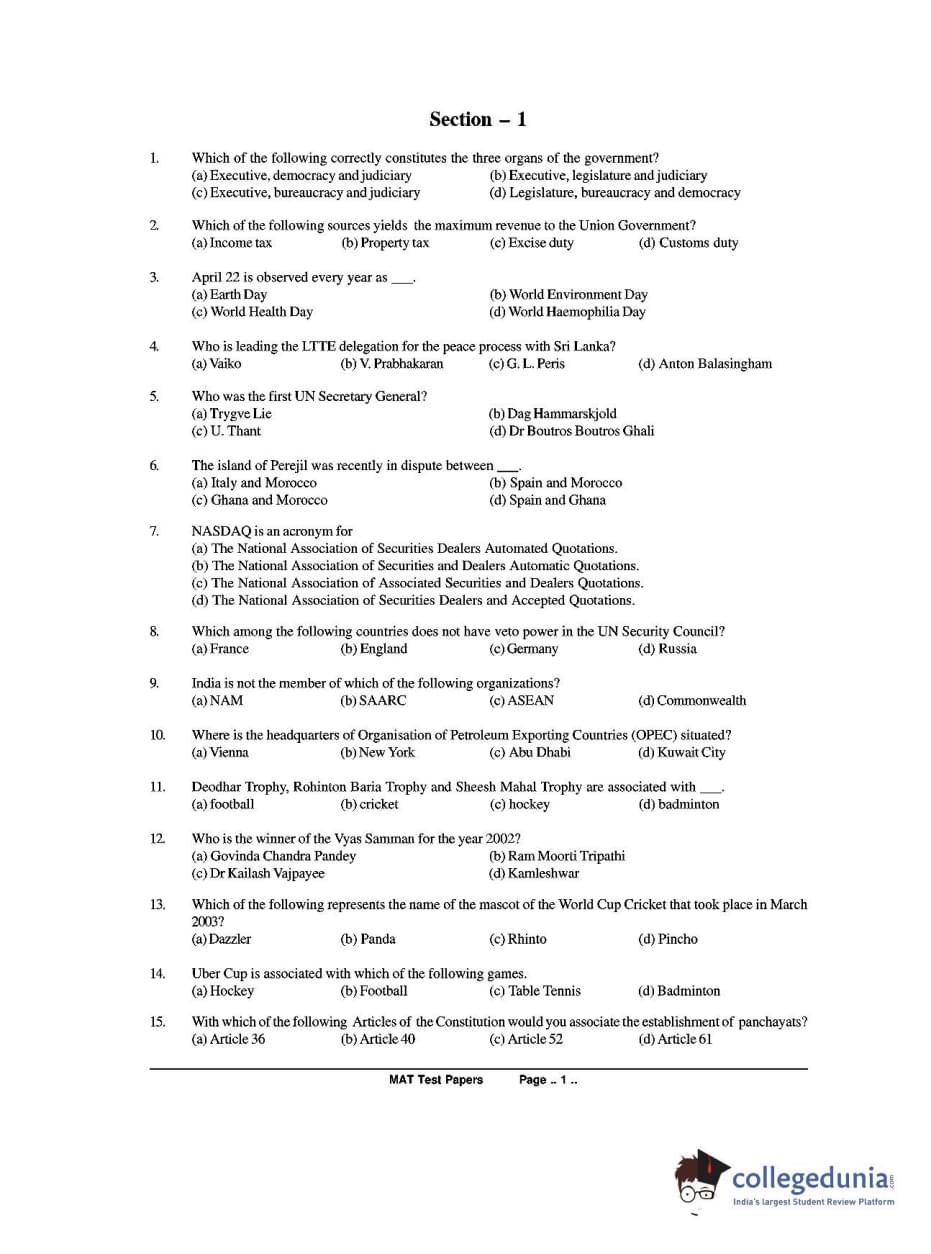
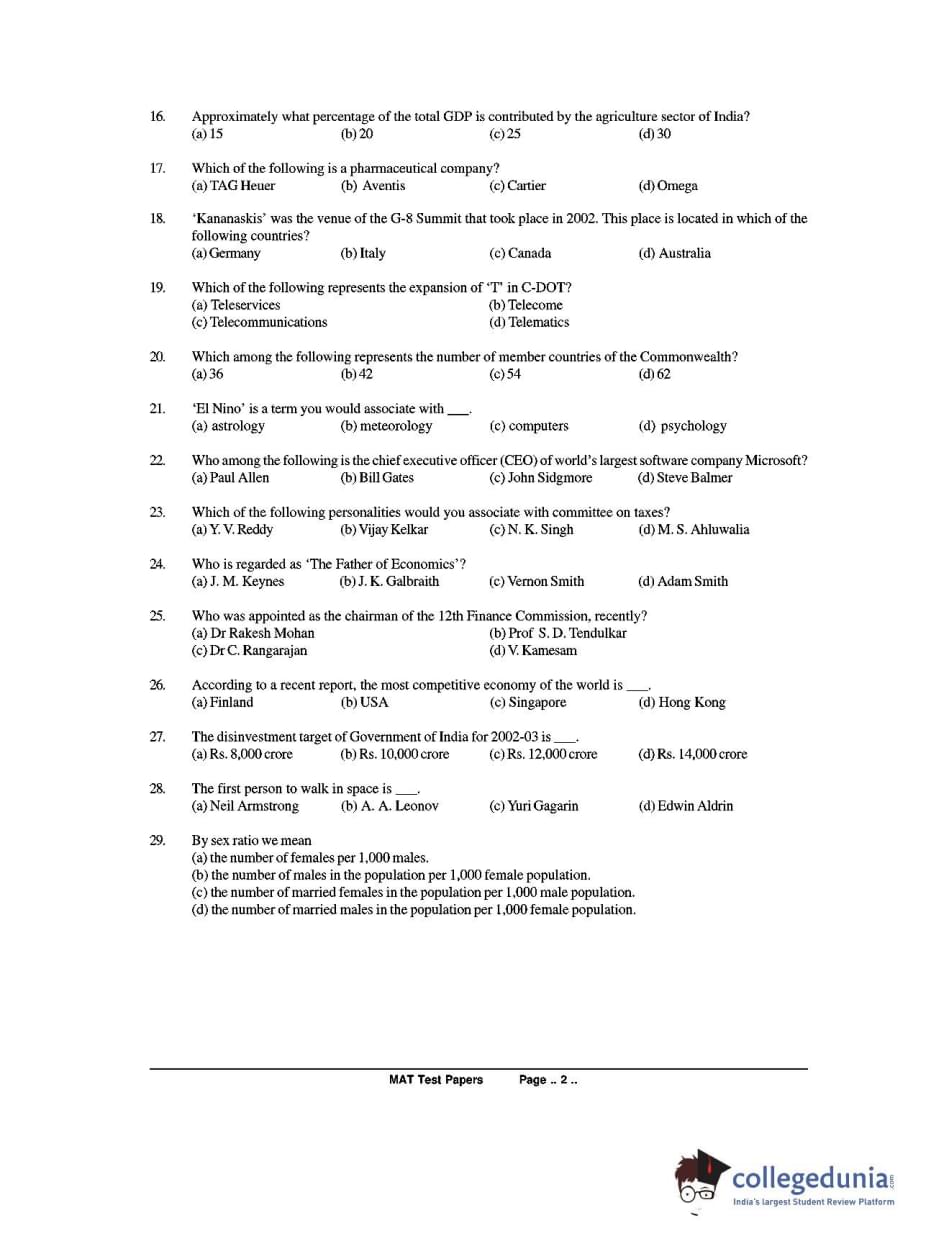
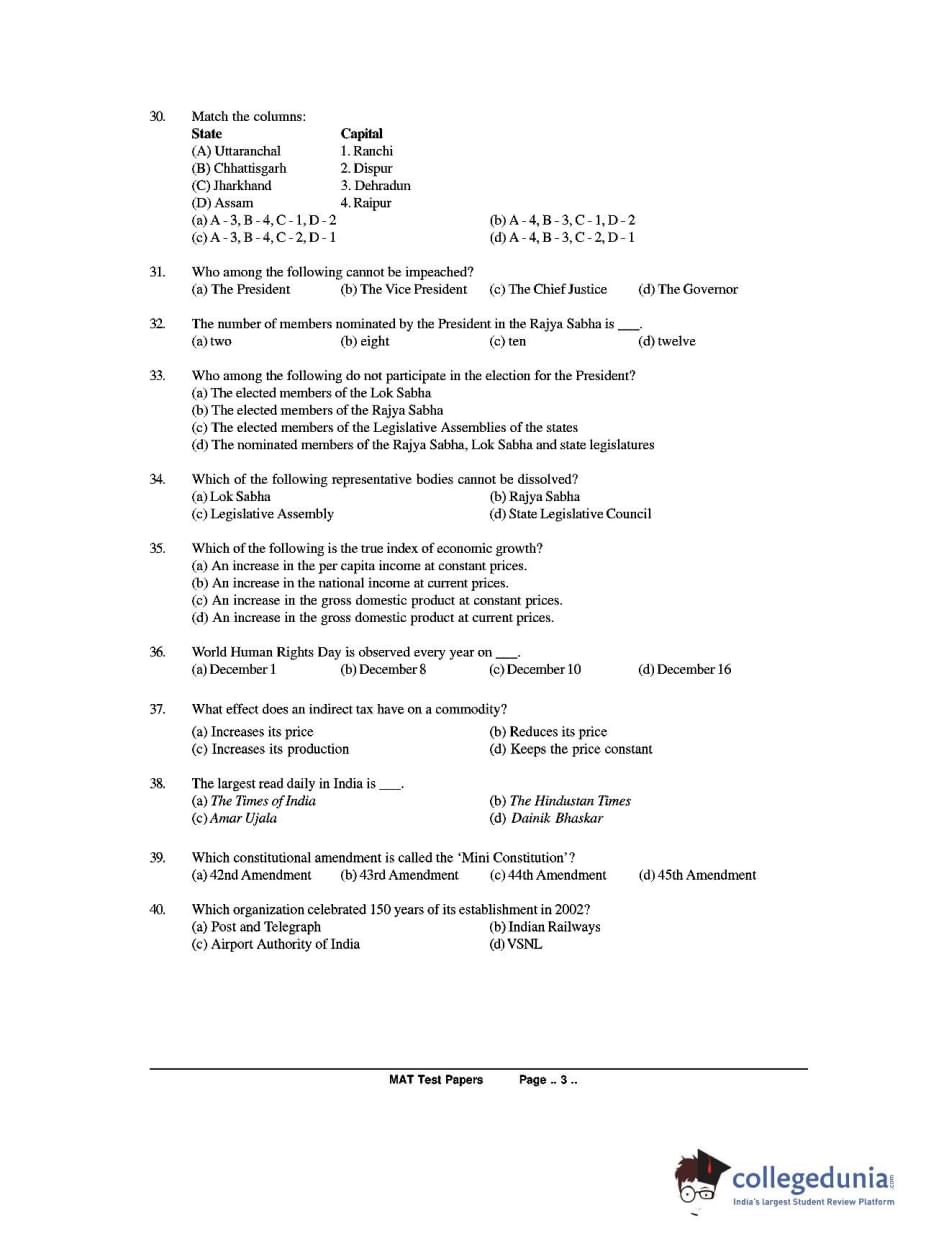
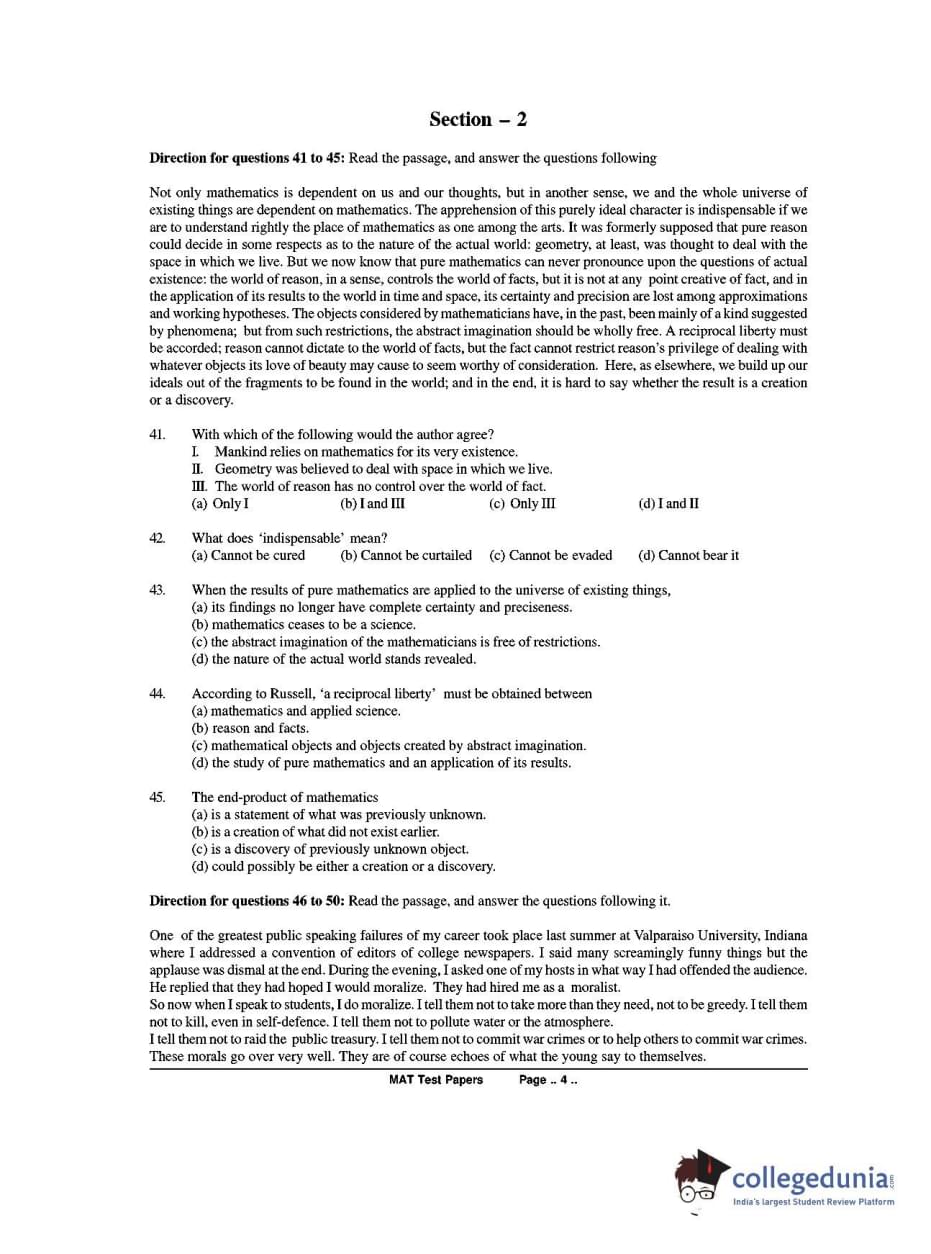

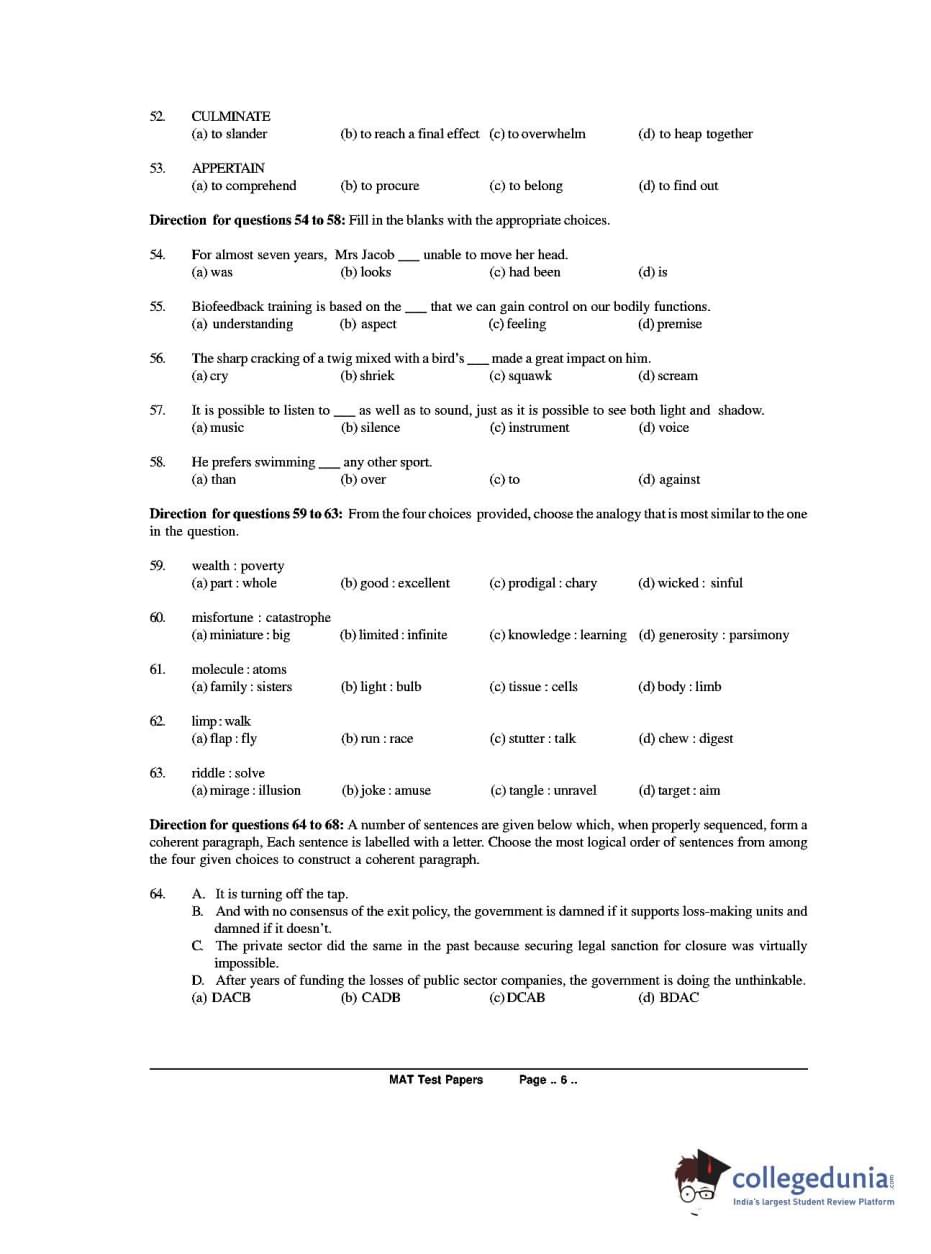
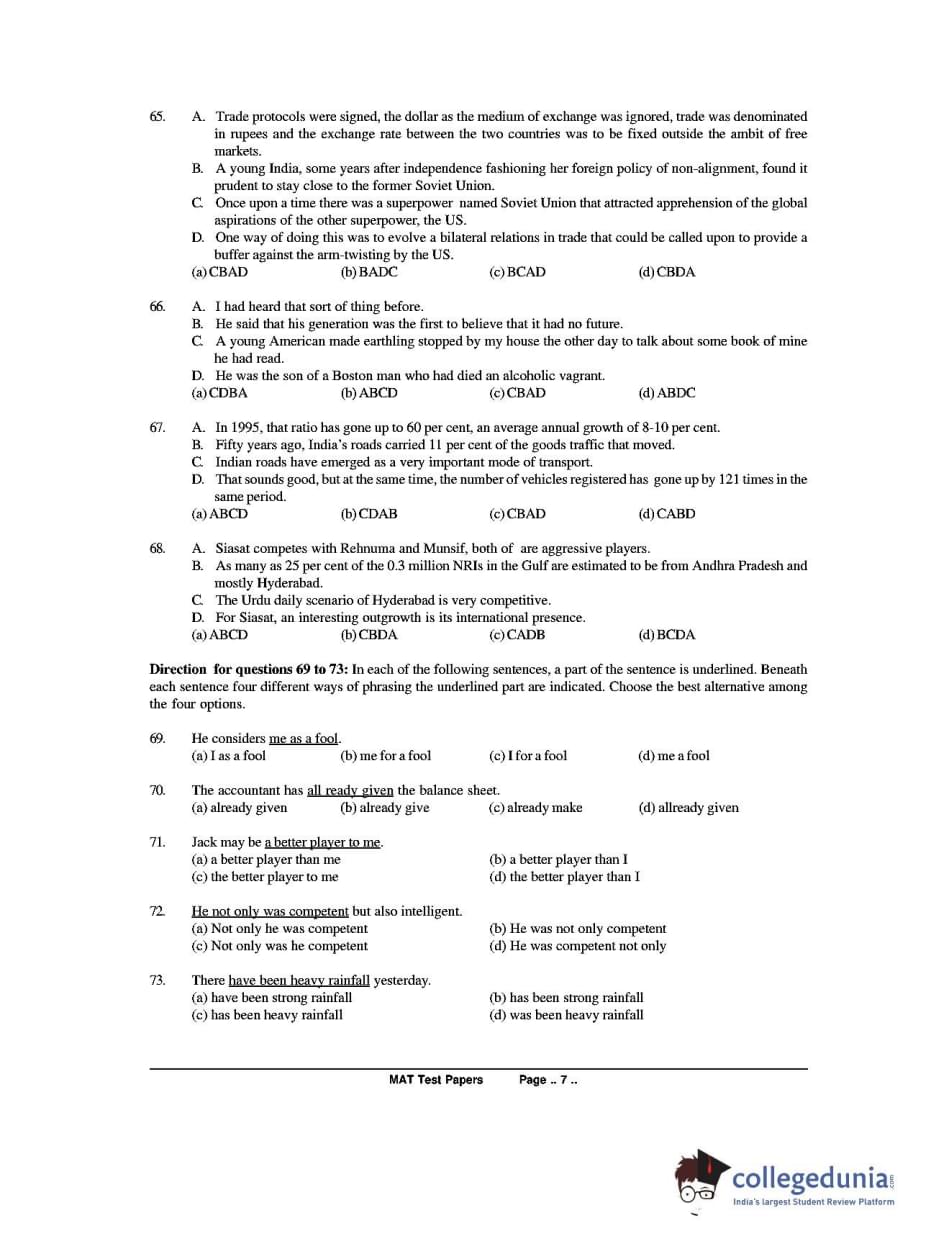
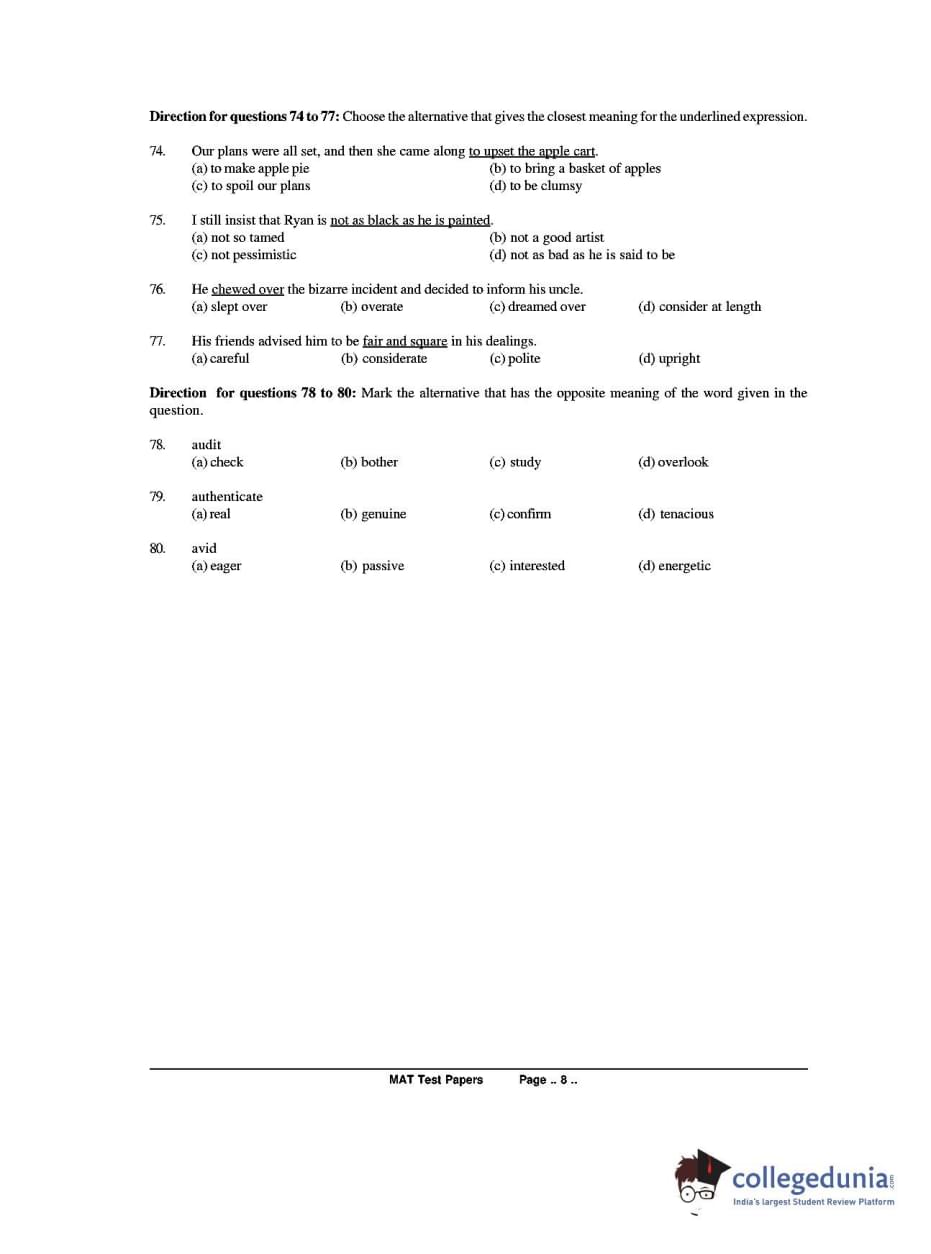

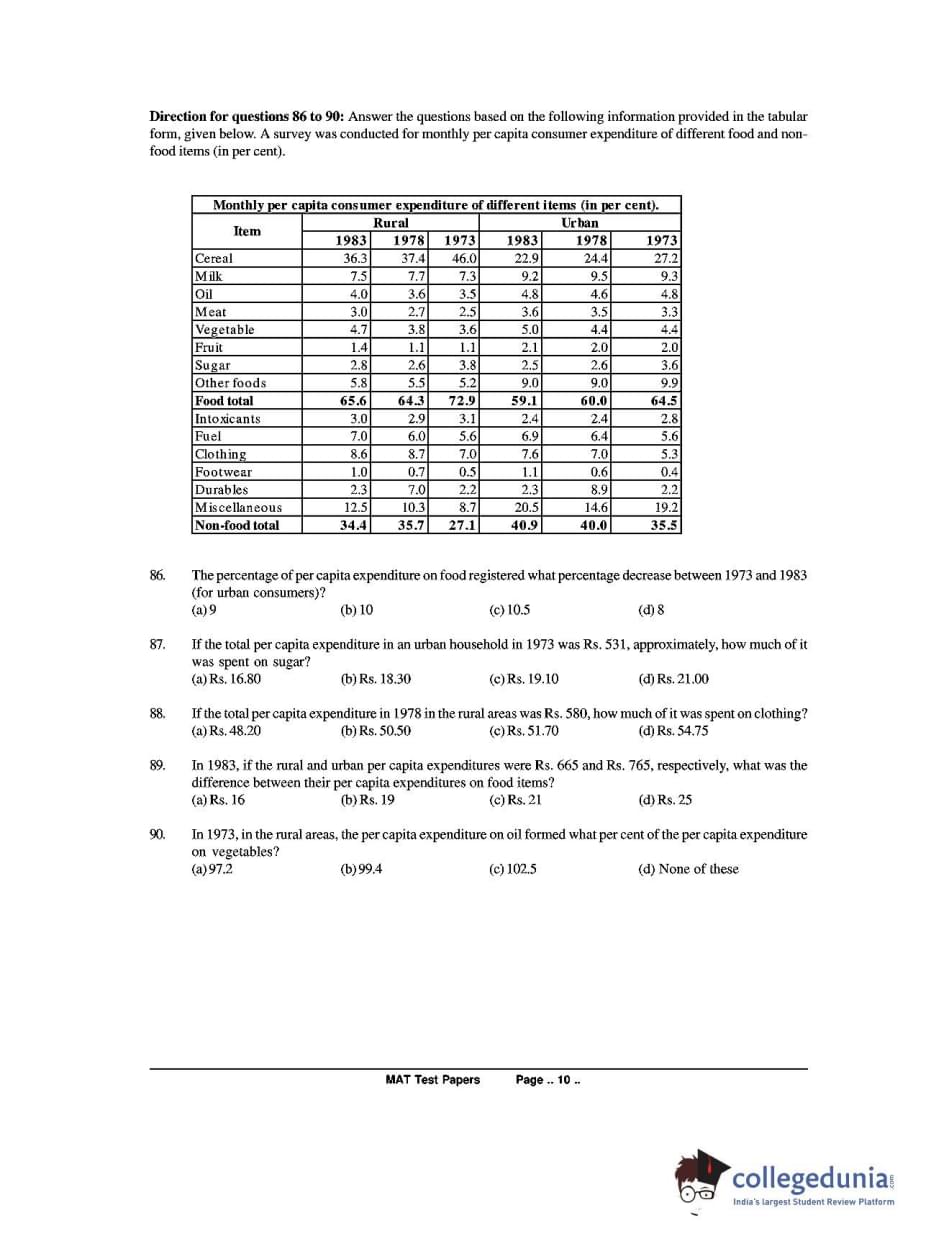
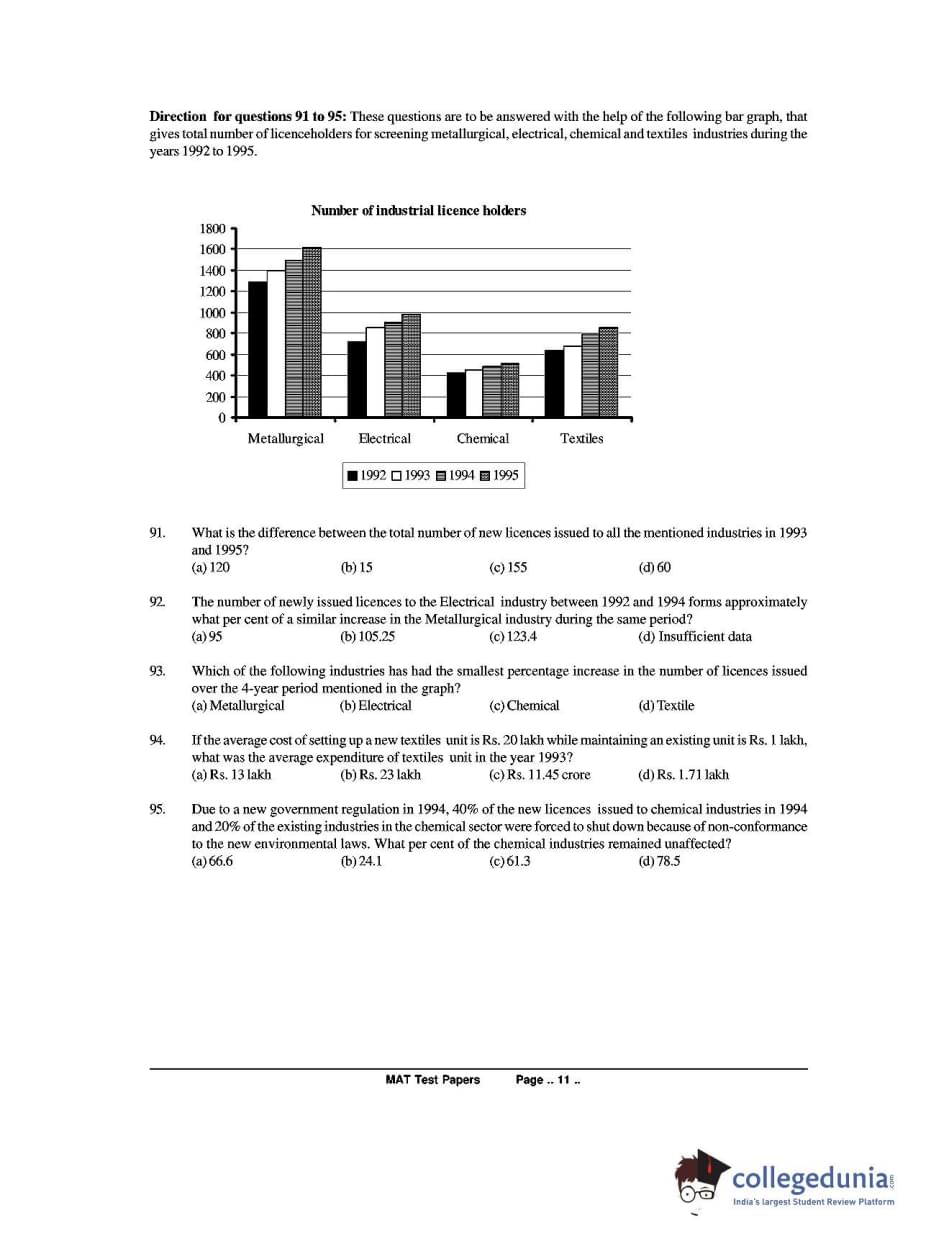

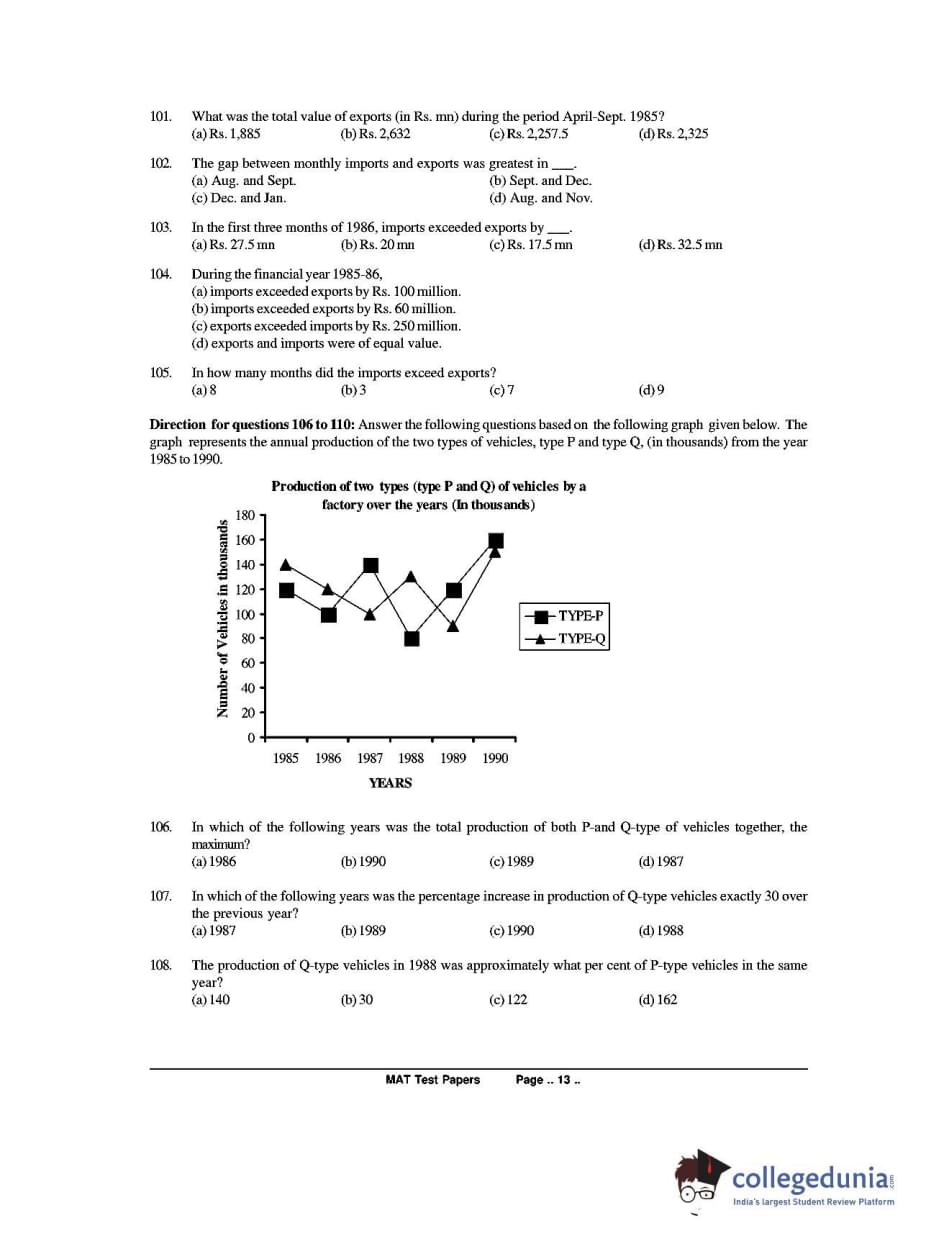

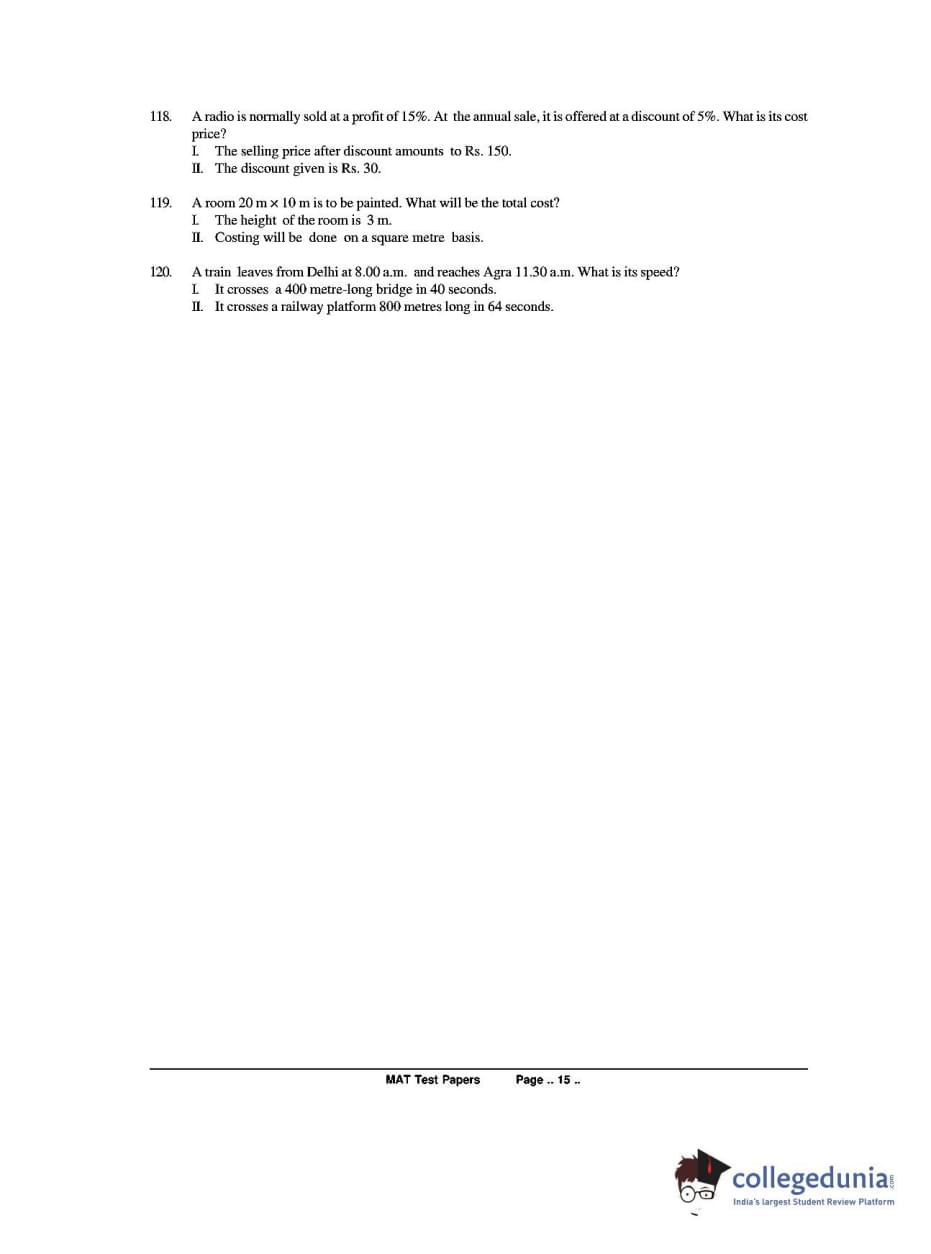
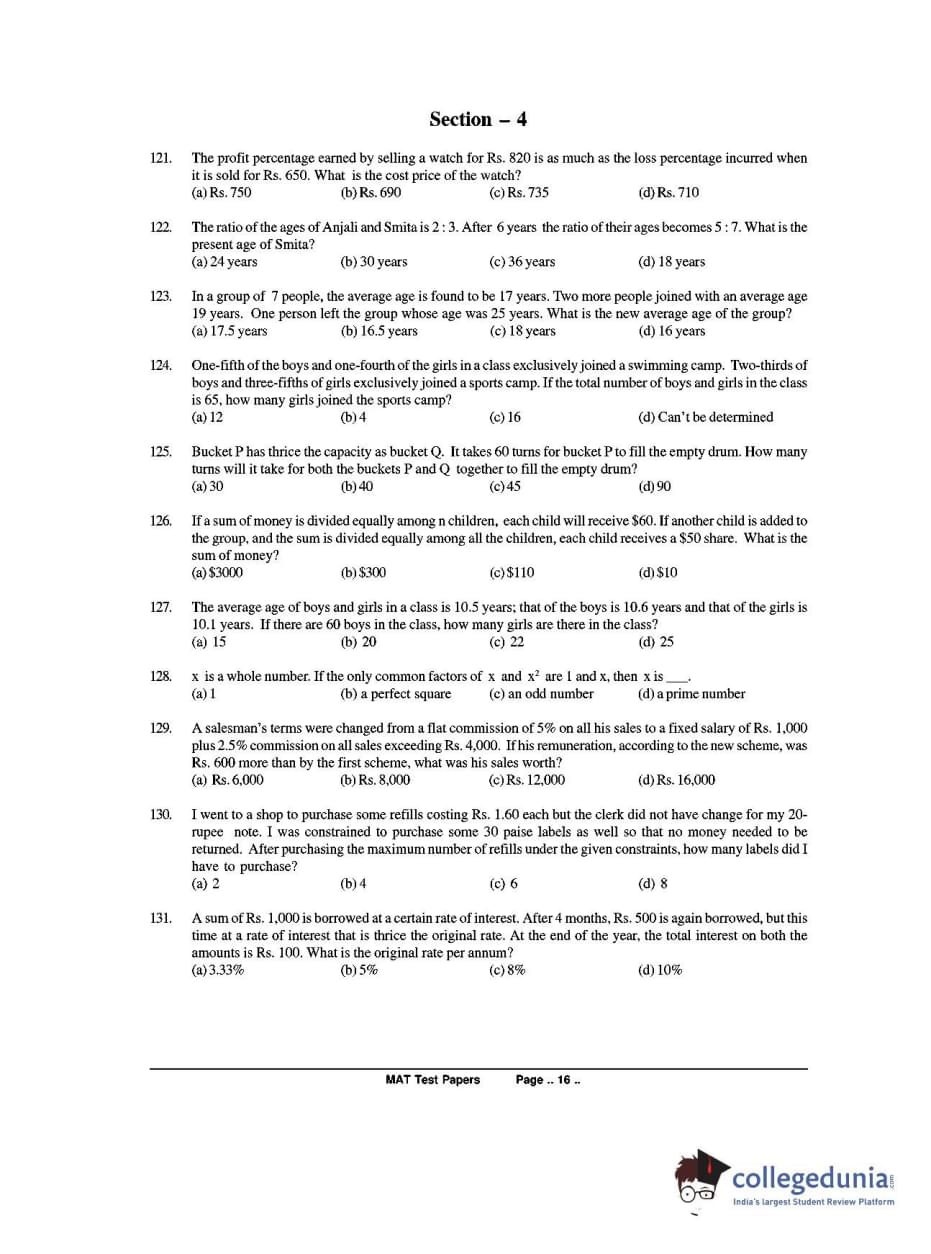
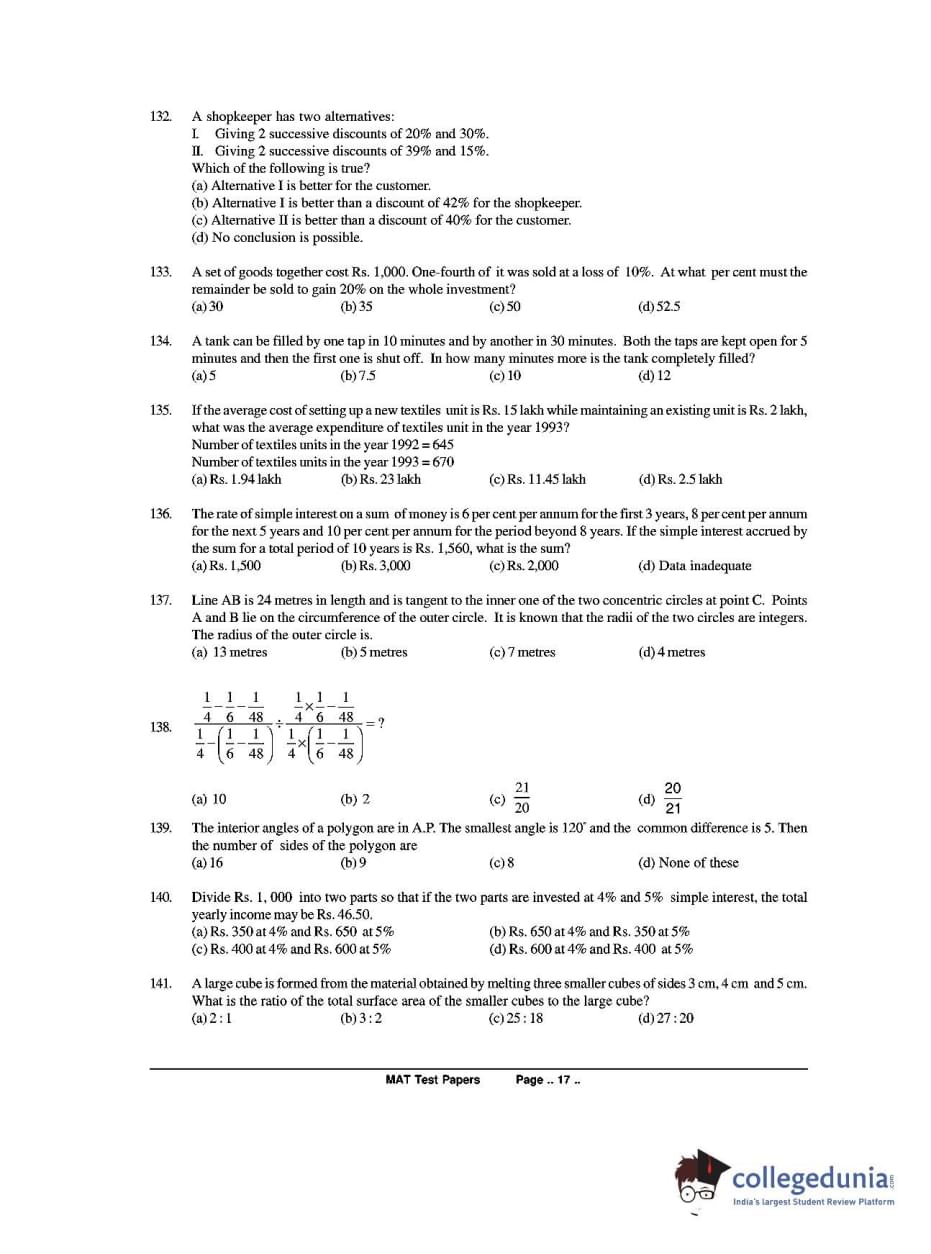

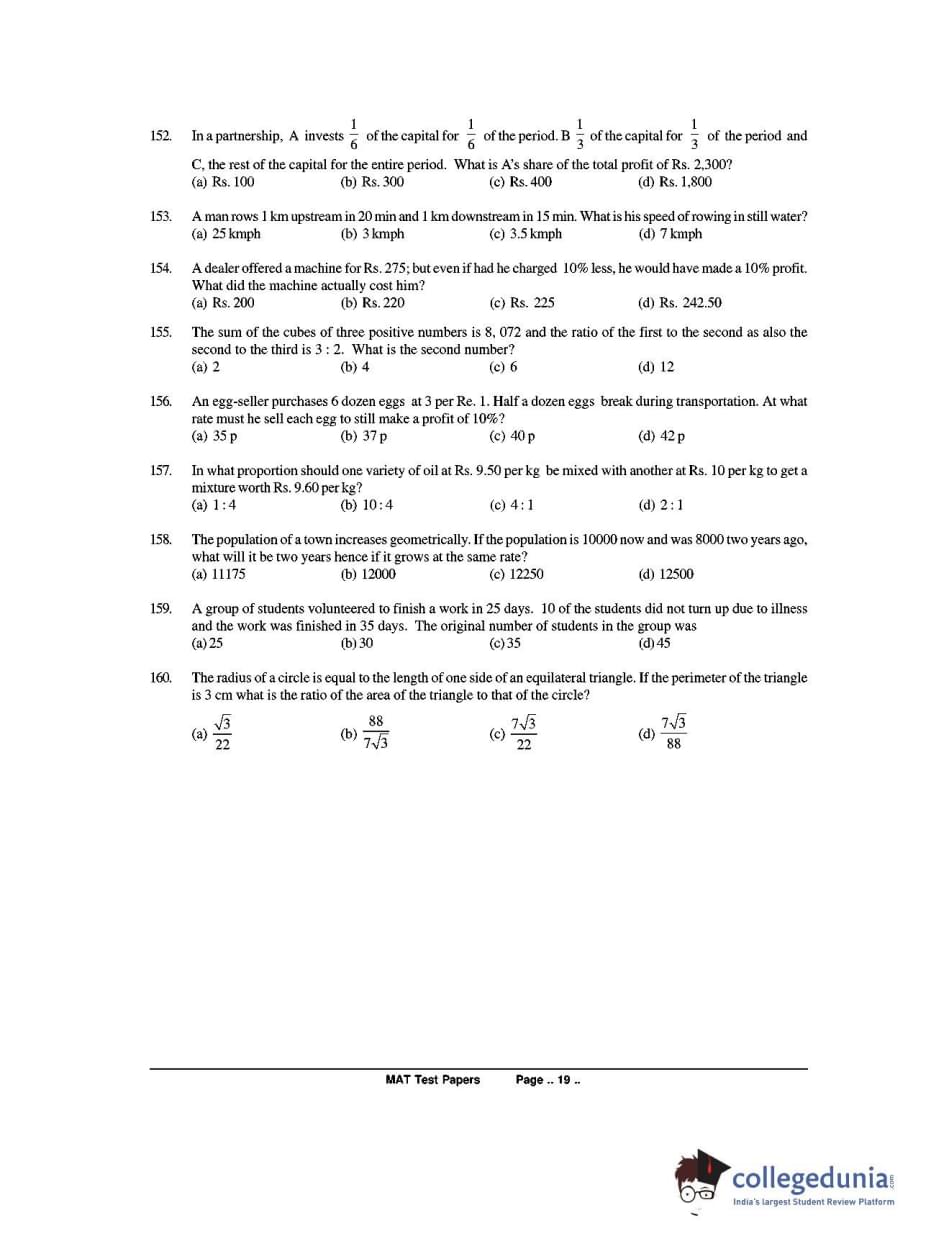
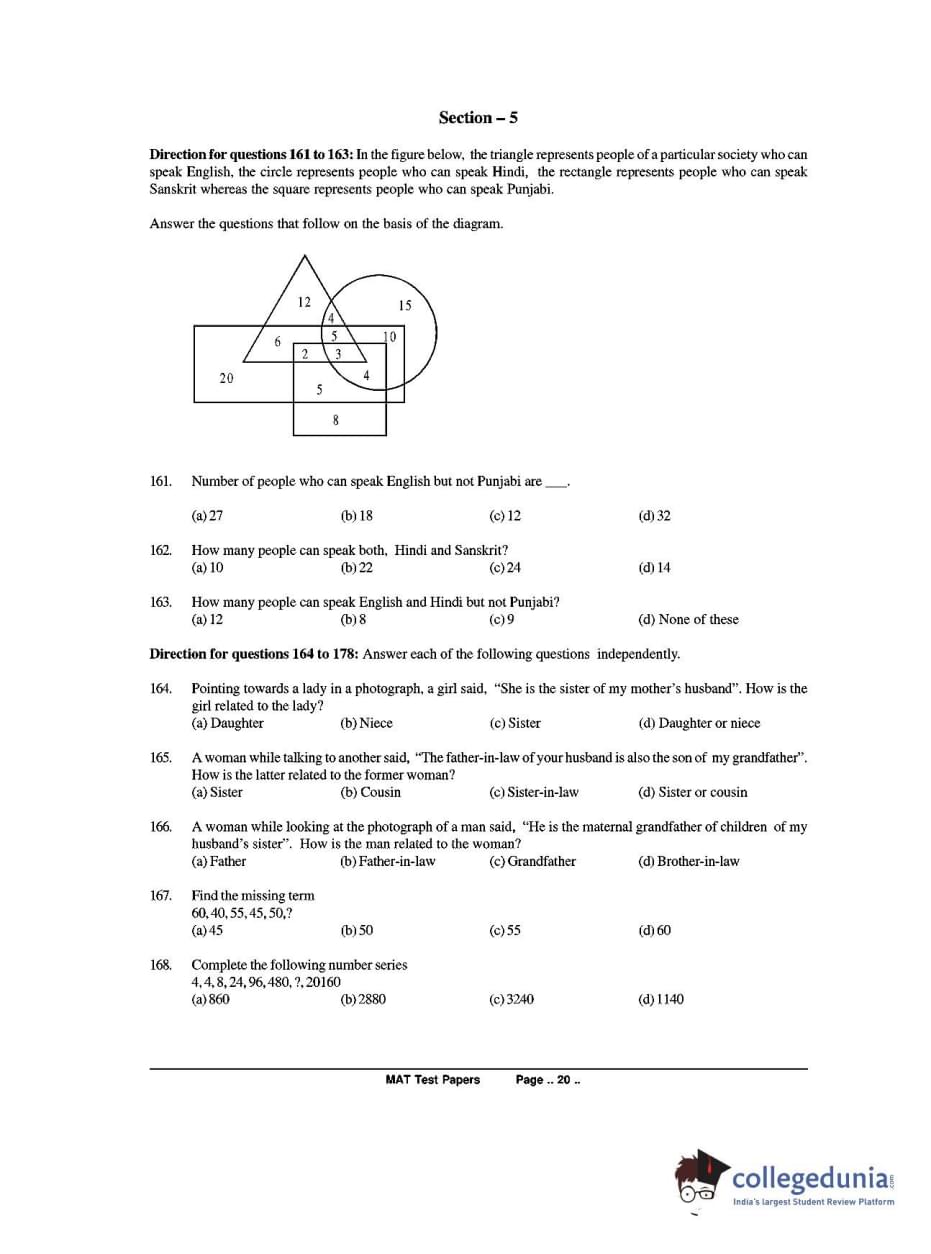

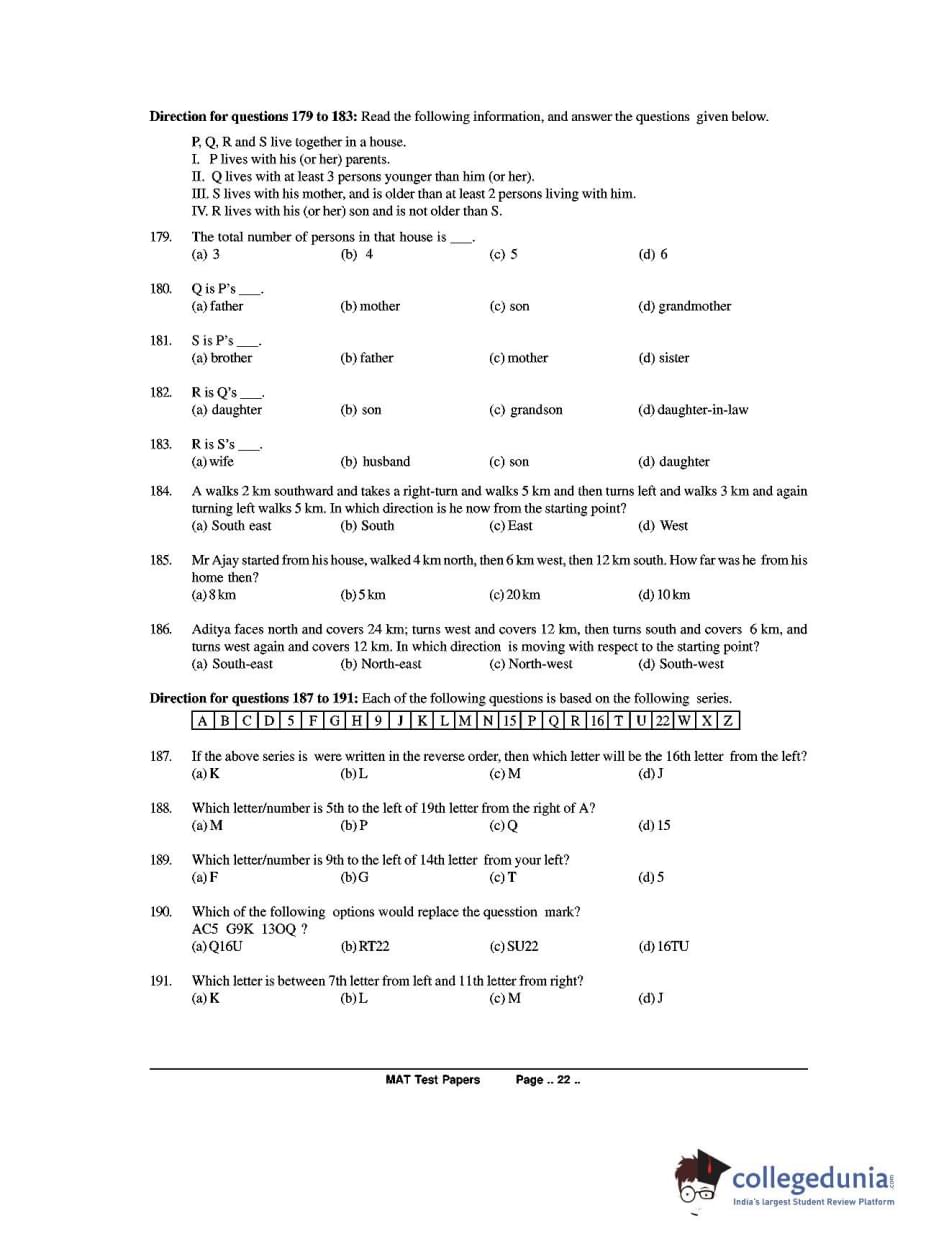
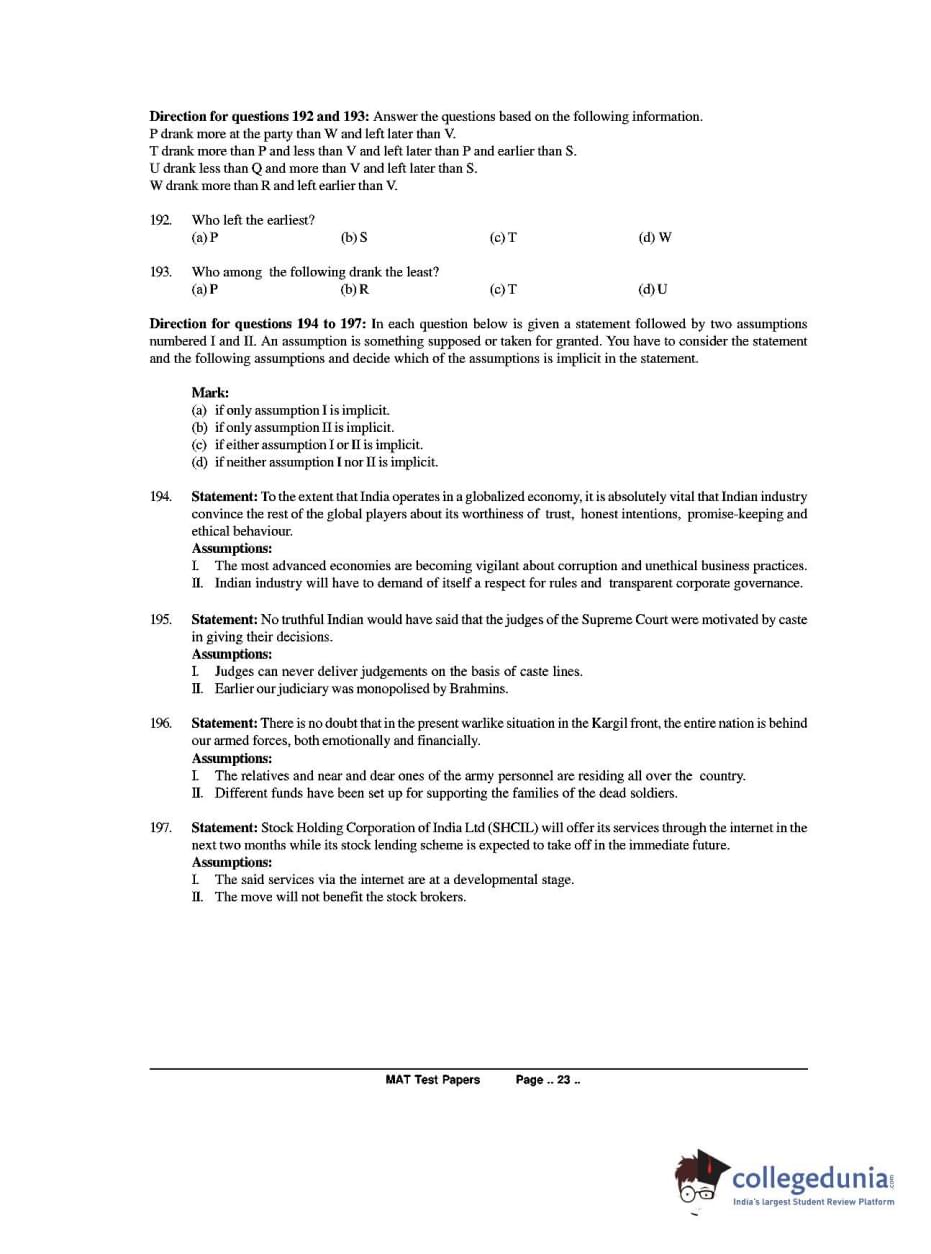
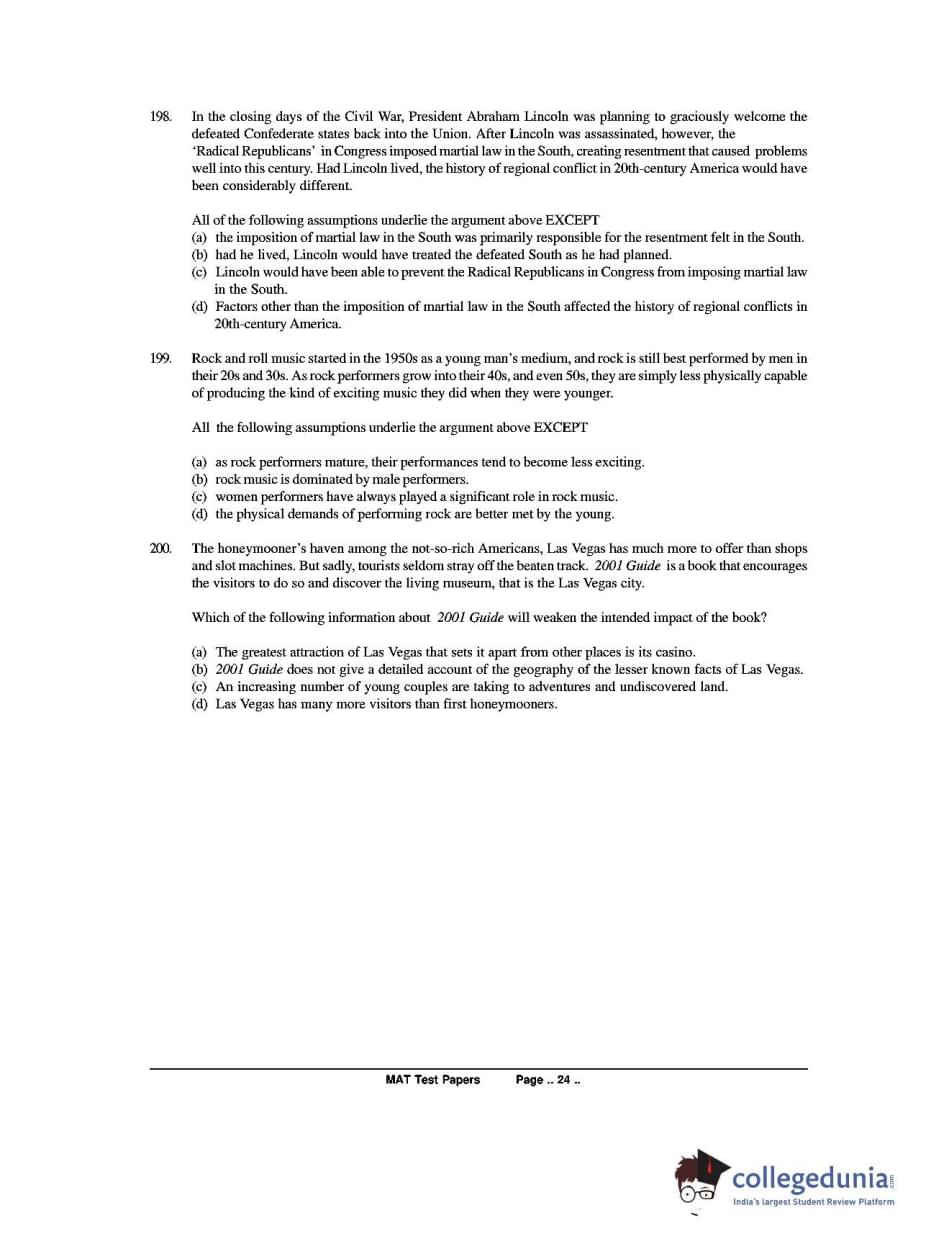
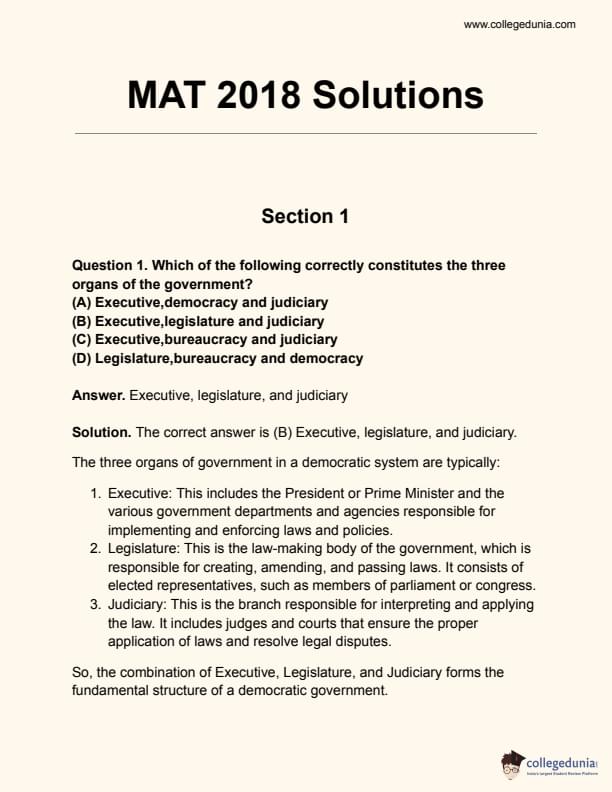
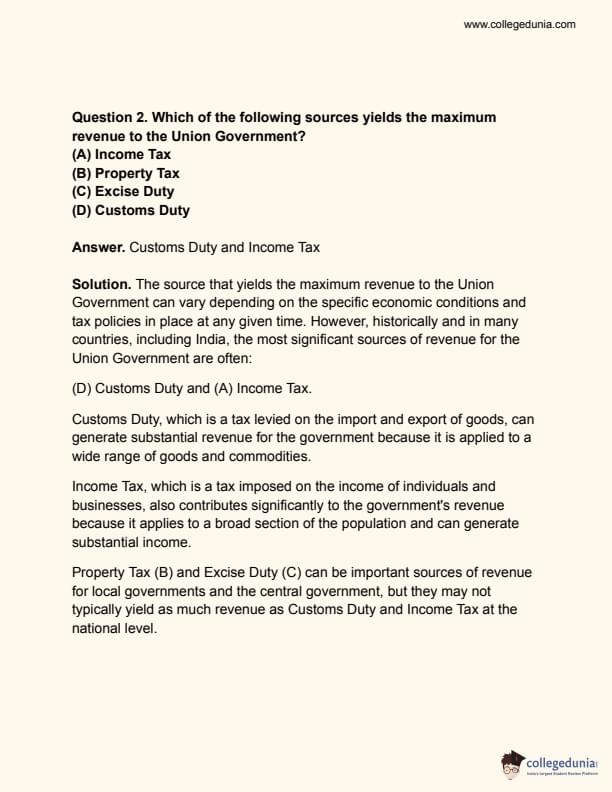
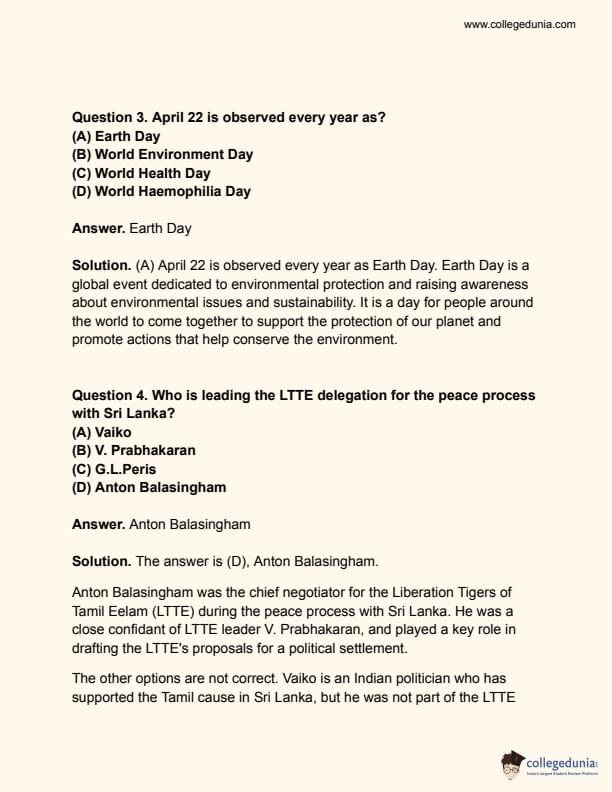

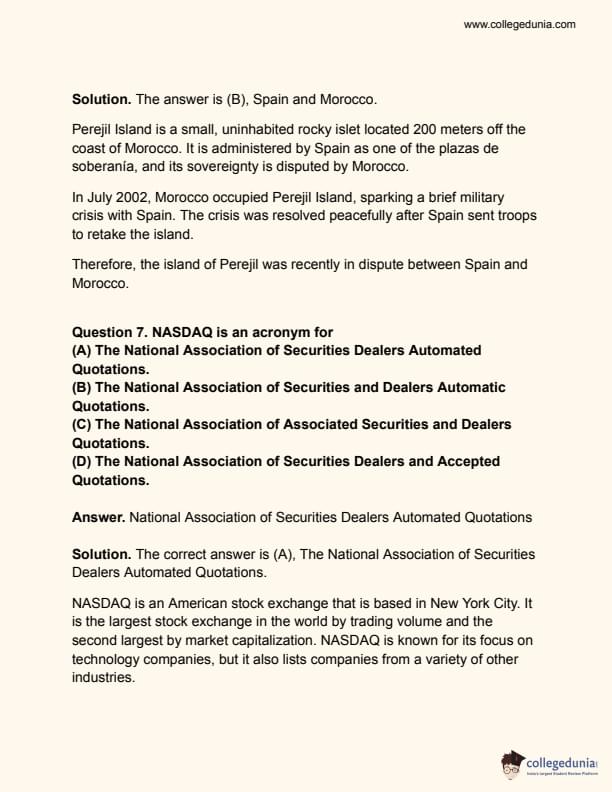
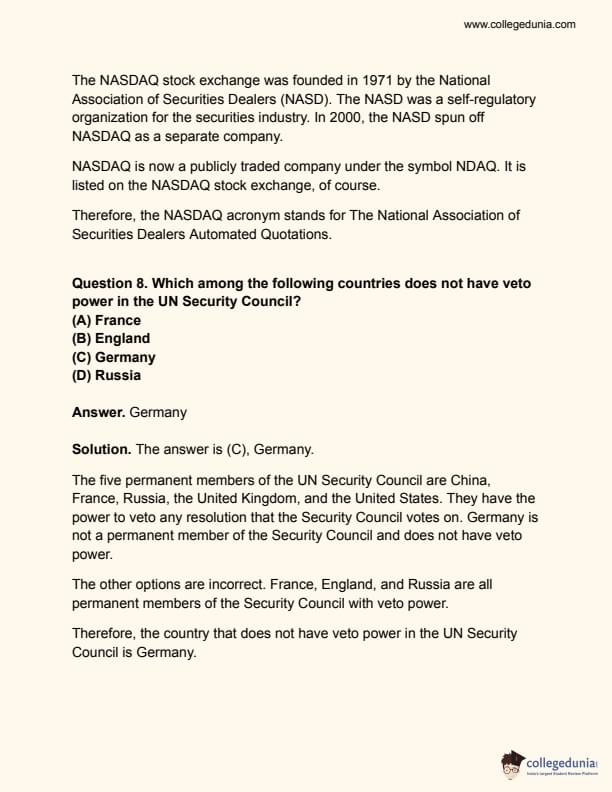
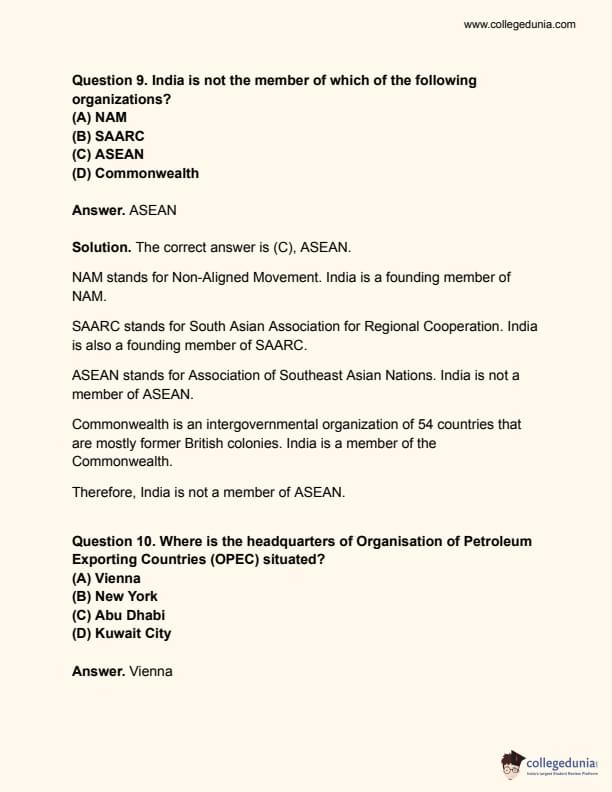

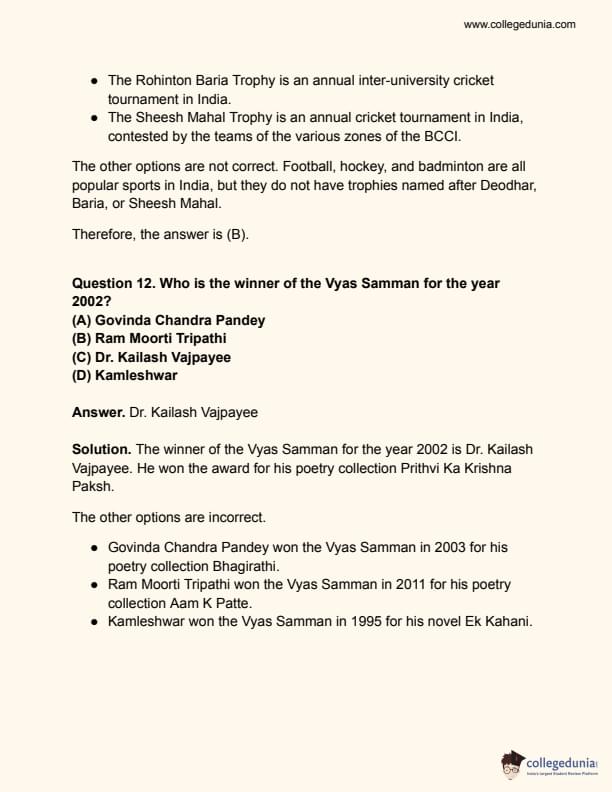
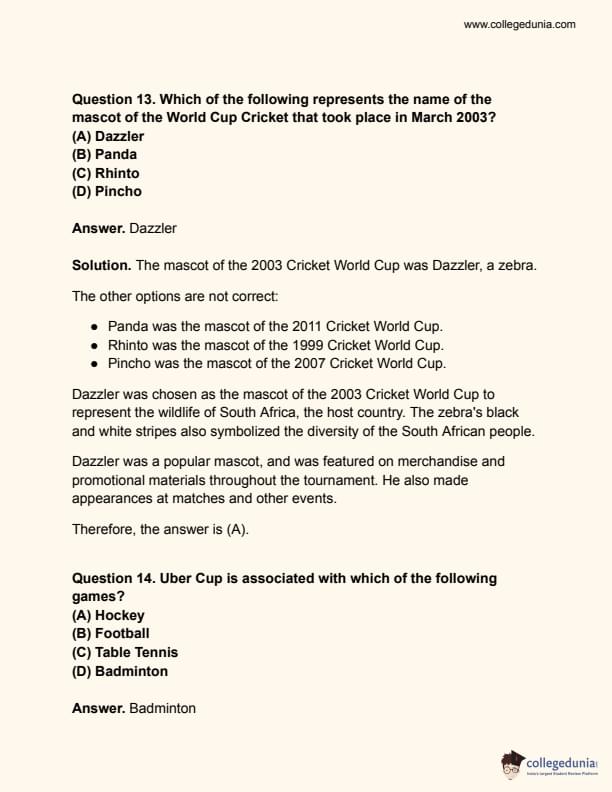
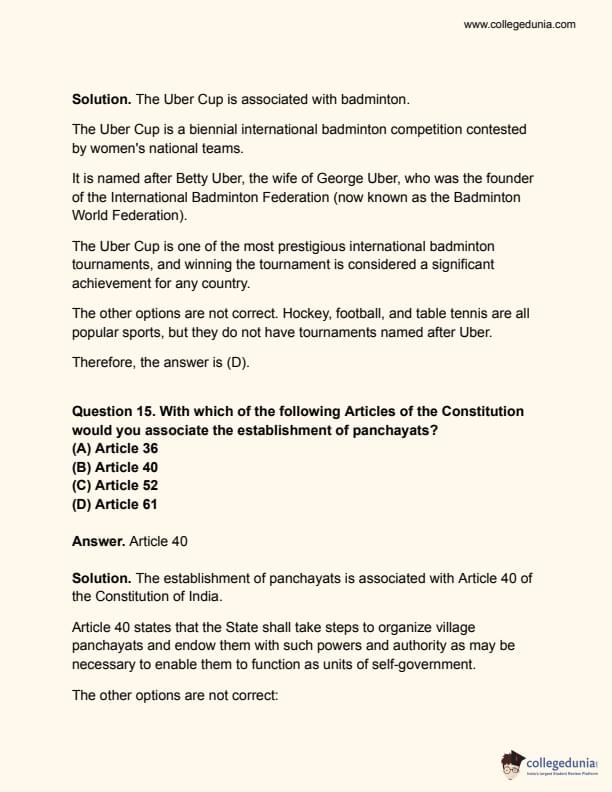
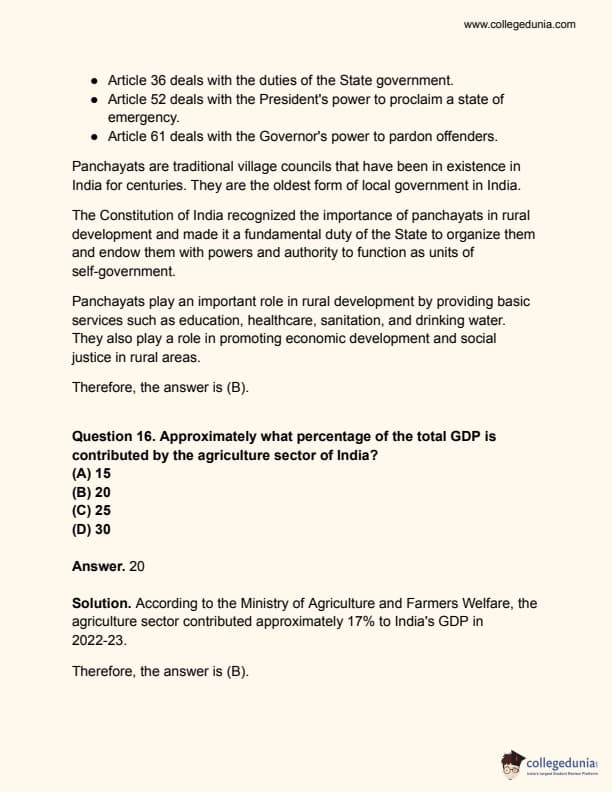




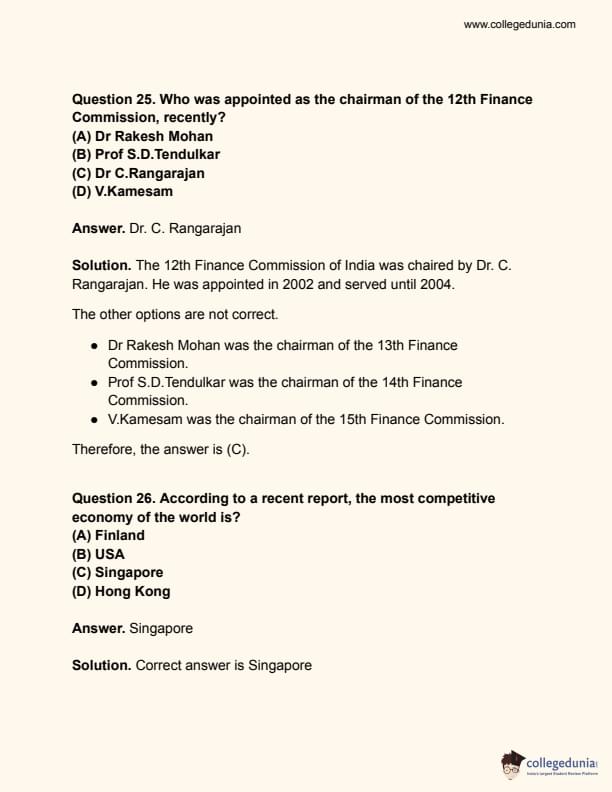
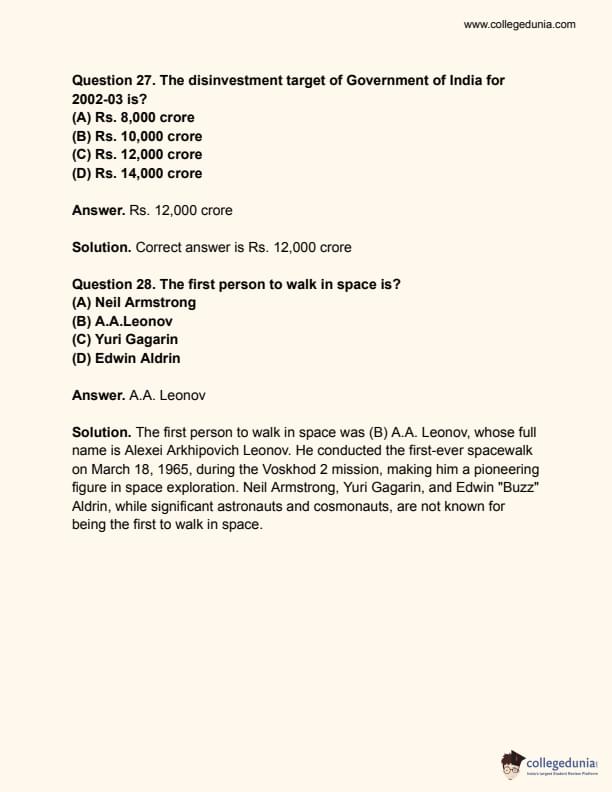


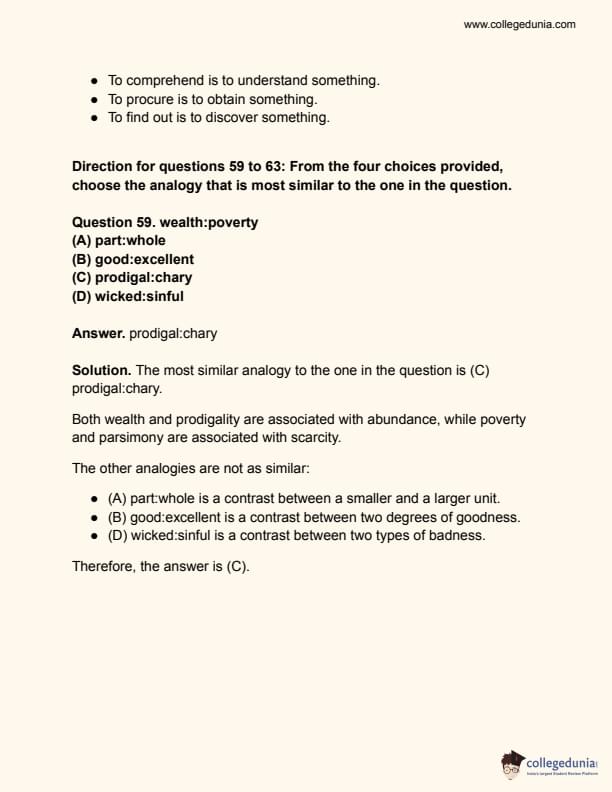
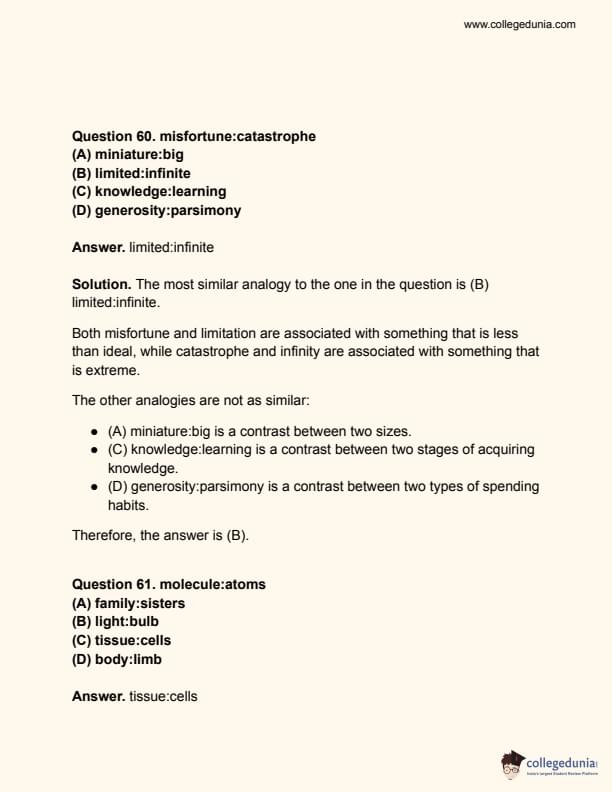

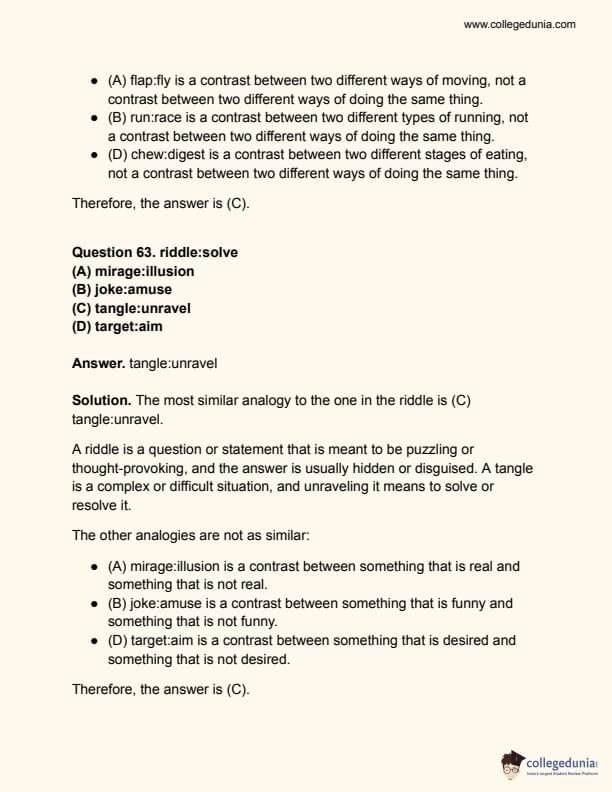

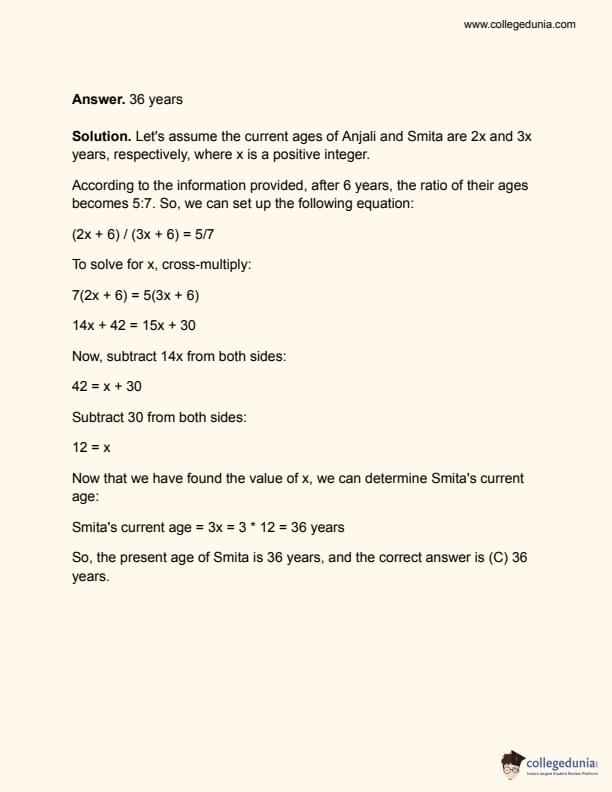
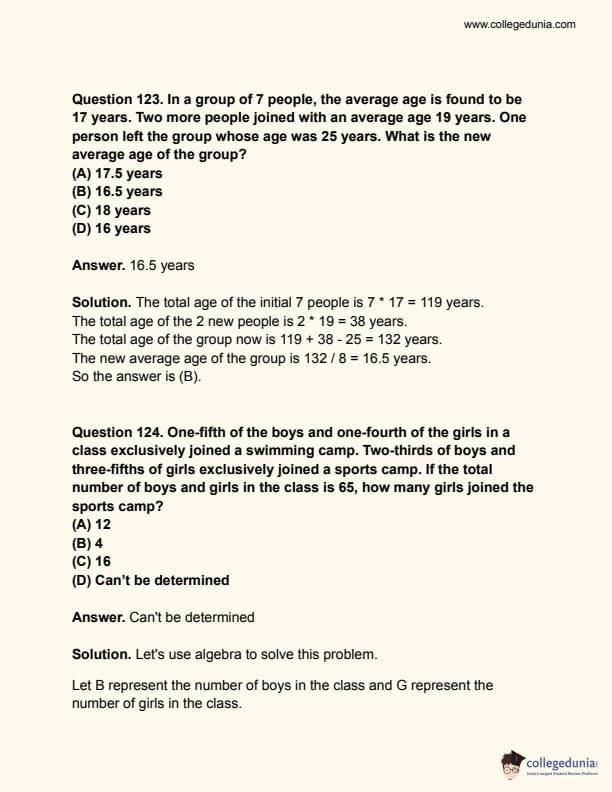
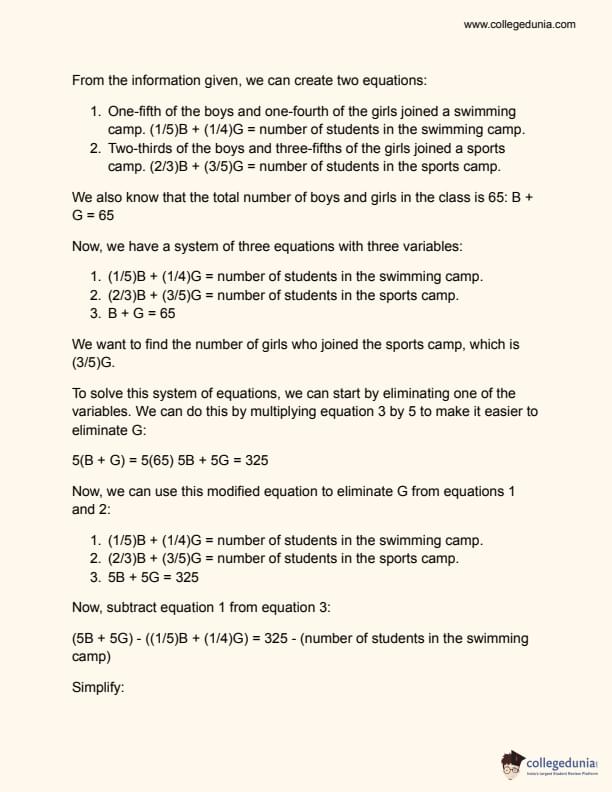

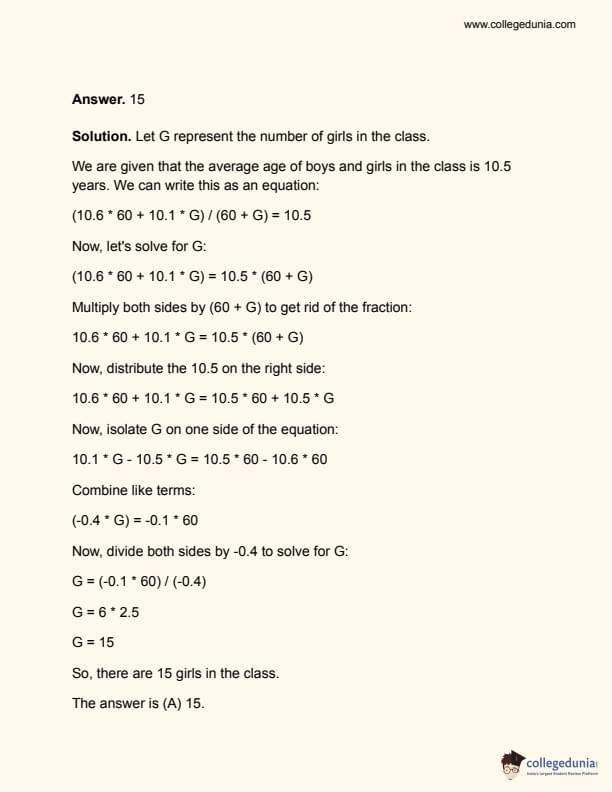
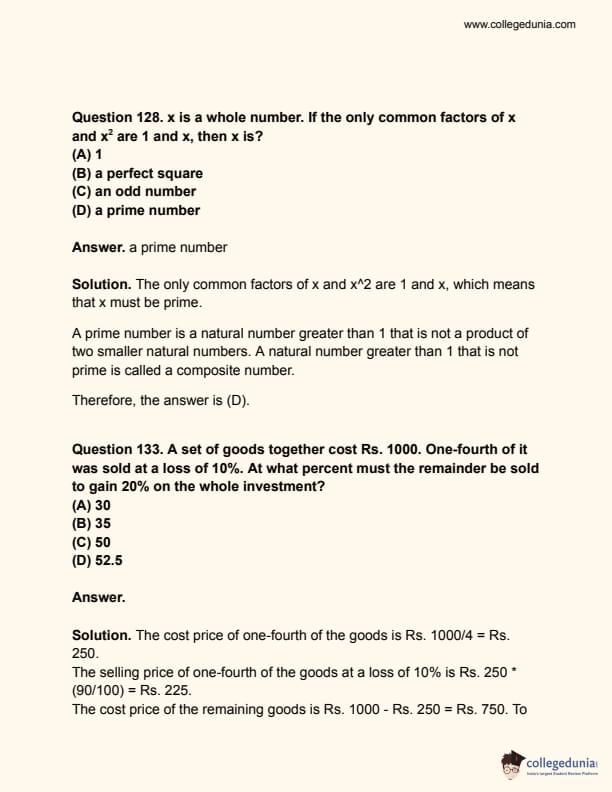
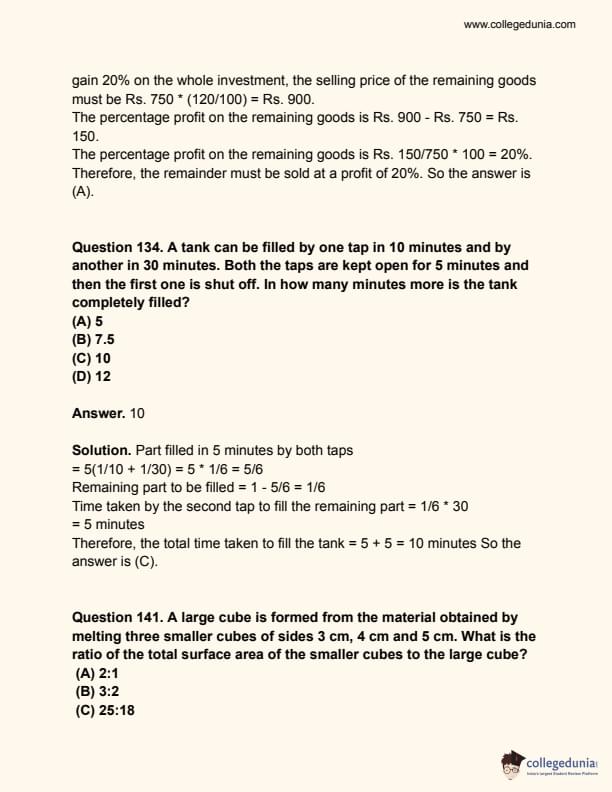
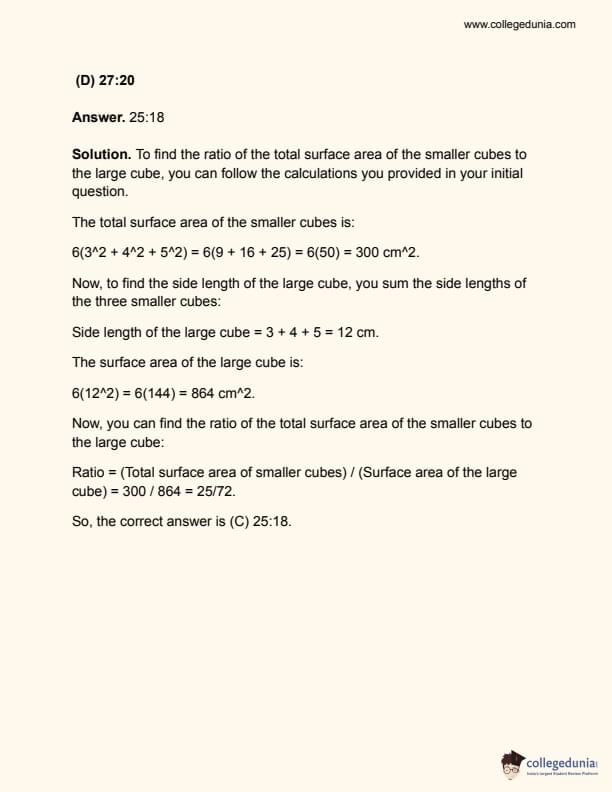



Comments